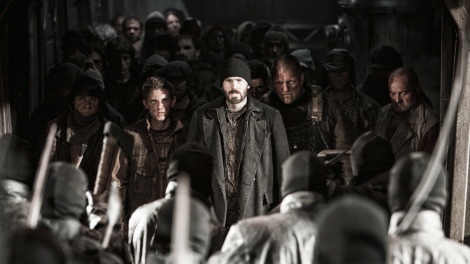Nick Milligan's Blog, page 7
March 12, 2015
Peaches: interview

Peaches
The contrast between the wild stage antics of Peaches and the musician and visual artist Merrill Nisker is at once vast and also makes perfect sense. They are, of course, two sides of the same coin – and that coin happens to be a creative tour de force. Since the release of Peaches’ fifth record I Feel Cream in 2009, the Toronto-native has performed a one-woman rendition of Jesus Christ Superstar (Andrew Lloyd Webber tried to stop her), developed and performed a rock opera about her own life – and its common misconceptions – called Peaches Does Herself (which was filmed and released at Sundance) and even tried her hand at Italian opera in L’Orfeo.
Now Peaches has returned to the studio and created the follow-up record to I Feel Cream - a collaboration with Vice Cooler (XBXRX and Hawnay Troof). I spoke to the entertainer from Berlin, where we discussed her upcoming extensive Australian tour, the new album and working with Kim Gordon.
How long have you lived in Berlin now?
Fifteen years. And last year I half moved to LA. I made the whole new album in LA, I bought a little house and did the whole album in the garage.
What drew you to work in LA?
I don’t know, I guess the lifestyle. Being able to have physical space and your own little house, and the weather. The normal stuff. There’s also a lot of great people there, as there are in Berlin. It’s good.
How does your new record’s sound compare to your last record, 2009’s I Feel Cream?
It’s sounding really good! (laughs) The actual sounds are really quite defined, I’m really in love with this album. It’s still very classic ‘my style’, and there’s a lot of rawness – I like it.
Did you go into the making of the record with a clear idea of what you wanted to achieve sonically?
Yeah, in the way that I wanted to continue in my classic style but sonically have it… I don’t know how to put it. It’s raw, but high-end raw, you know? It’s quite minimal still, it’s dirty but really pleasurable to listen to.
…the real superpower is that I can actually entertain you with a microphone, even if I was just in my underwear or my socks.”
How long did the album take to make?
I did this album together with my friend Vice Cooler and we just spent 10 hours a day working, and I literally had nothing written before. There was no music, nothing. We were seeing what we could do right there, which was great because with the last album [I Feel Cream] I did a lot of demoing – by myself, and I worked with Simian Mobile Disco mostly. And that was quite different, because as producers they would rather, from the ground up, demo all the songs. And with the other albums I wrote them all myself, with the exception of maybe two songs. So this [new album] was a complete collaboration with a friend that I trusted, that I could say anything in front of, which is really special – for both of us.
You’ve done a lot of collaboration over the years, being invited to work with people like Christina Aguilera and R.E.M., plus also having people guest on your own records. Is there a particular quality that you look for in people that you choose to collaborate with?
Usually, for me, collaborations just come up. The two that you mentioned, that was them asking me to collaborate. On this album there’s a few collaborators. My main collaborator is Vice Cooler, who’s just a good friend. He has great computer skills and comes from a complete noise background. It just worked. But there’s another song with Kim Gordon on the new album. She was amazing, because she came in [to the studio] and we just played her the beat and right away she latched on to it and got a great hook out of it. Which for me was really incredible to see, how quick she can work. She’s so used to experimentation that it doesn’t really matter if it’s noise music or a dance beat, she can just go with it.
I imagine this new record must come with a whole new live show too. Is that something you’re working on at the moment?
It’s funny, I really want a lean, mean, back to basics show. I think my superpower is that I’m a performer. There’s so much great technology and I have taken advantage of it, but I think the real superpower is that I can actually entertain you with a microphone, even if I was just in my underwear or my socks. So I think that’s a very important element to focus on for 2015, to make [the show] special in terms of something that you need to be there to see. Obviously there’s Youtubes all the time and everything’s so disconnected in terms of a real experience, that’s why I want to focus on [the performance].
In recent years you have been in three stage productions – your solo performance of Jesus Christ Superstar, your own musical Peaches Does Herself and also singing Italian opera in L’Orfeo. Have those experiences changed you as a performer?
Those were quite different. For me the most incredible experience was singing all of Jesus Christ Superstar. I sang the whole thing, and that was about seeing if I could memorise it all without panicking on stage, because it’s not my own material, and also being able to sing in all those different voices. Which is something that I don’t choose to do with Peaches. But it was incredible to stretch my voice in that way. And, also, in that production, and in the opera, there was a lot more standing still and letting the voice carry a lot of the show instead of running around like a maniac like I usually do.
When you’re working on a new record do you give any thought to how the songs will translate to the stage?
Yeah, it’s funny, I never really think about how they are on stage until after the whole album is written. With the first two albums, The Teaches of Peaches and Fatherfucker, I had no need for a band. Then when Impeach My Bush was done, I was like ‘this is a glam rock band album’. This album too, it’s a good lean machine.
I’m sure that there will be some people who wonder why I’m acting like Miley Cyrus or something. They’ll be like, “Why does that old lady think she’s Miley Cyrus.”
What sort of live band will you bring to Australia in 2015?
It will just be me.
Is Australia a part of the world that you enjoy performing in?
Australians are very open and very passionate and a great audience. I’ve made a lot of incredible friends and I’ve actually collaborated with a lot of Australians – my first dancers were from Australia, imported.
You’re doing the Groovin the Moo tour this year, which takes international artists outside the capital cities that they would normally visit on an Australian trip. Are you looking forward to exposing new people to your live show?
Yeah, it’s really cool to be playing not the usual suspect major cities, which is what I usually do all around the world [play regional areas]. Some smaller towns obviously will not know about me and I’m excited to infect them (laughs).
Groovin tends to be a younger audience, so I’m looking forward to seeing their reaction when you come out on stage.
Yeah, me too. It’s interesting when you’ve been doing a particular thing for 15 years now, and I’m sure that there will be some people who wonder why I’m acting like Miley Cyrus or something. They’ll be like, “Why does that old lady think she’s Miley Cyrus.”
Little do they know, it’s the other way around – she’s copying you.
Let’s say “inspired [by]”.
Do y0u have any other projects in the works?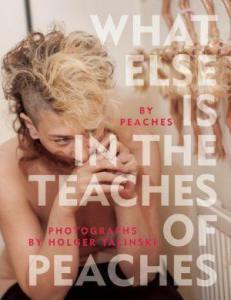
There’s a coffee table booking coming out [What Else Is In The Teaches of Peaches] – a collaboration by me and a photographer named Holger Talinski. He’s been following me around for six years now, and that also includes some essays written by Michael Stipe, Yoko Ono and Ellen Page. It’s a good cross section of on-stage, off-stage life.
PEACHES 2015 AUSTRALIAN “GROOVIN THE MOO” TOUR DATES
Sat 25 April – Oakbank SA (ANZAC Day)
Sun 26 April – Bunbury WA (ANZAC Long Weekend)
Sat 2 May – Bendigo VIC *SOLD OUT*
Sun 3 May – Canberra ACT
Sat 9 May – Maitland NSW *SOLD OUT*
Sun 10 May – Townsville QLD
PEACHES AUSTRALIAN 2015 HEADLINE SHOWS
Wednesday 29 April – The Bakery, Perth
Friday 1 May – The Hi-Fi, Melbourne
Wednesday 6 May – The Hi-Fi, Brisbane
Friday 8 May – The Hi-Fi, Sydney

February 8, 2015
Spiegelworld impresario Ross Mollison: interview

Ross Mollison
Ross Mollison’s observation that the United States was unfamiliar with Belgian spiegeltents saw him build an entertainment empire. The Melbourne-raised promoter now lives half his year in America, growing and developing his Spiegelworld company. His productions dazzle tens of thousand of happy punters across the world – particularly New York City, Las Vegas and Australia – with an adult-themed, sensual cocktail of circus arts, cabaret, vaudeville and comedy.
Mollison brought the Spiegelworld production Empire to Newcastle last year and the show sold over 14,000 tickets. Empire played out of a custom-built spiegeltent erected in Wheeler Place, alongside the Civic Theatre.
Now Mollison has brought a second show, Absinthe, to Australia and it kicks off its Down Under run in Newcastle next week.
The impresario is on the phone from his Brooklyn home in the middle of the so-called “Snowpocalypse”.
NM: You’re an Aussie ex-pat – you grew up in Melbourne?
RM: Yep, in Mt Waverley. I started working here [in New York City] in 2000, but I have a house in Melbourne and I live between the two places.
NM: Did you move to America to pursue a form of entertainment like Spiegelworld?
RM: The first show that I produced here was Puppetry of the Penis. I produced it in Australia and I thought we would bring it to America and we launched that here in 2001. Then I produced Slava’s Snowshow in America and Australia, and all over the world. My love has always been – for lack of a better term – circus arts. Absinthe is not traditional circus arts, but I love that sort of circus art with a strong comedy bent.
Nobody has heard of a spiegeltent in America. A friend of mine, David Bates, started bringing them to Australia about 10 years ago and they’re really popular. I thought “we should take this idea and do it America”. I started off working with David and then I built my own business here doing it, because people really love this form of entertainment.
To a large degree, that’s why we went to Newcastle. I worked on the original production of Tap Dogs, I promoted that with Sydney Theatre Company and Dein Perry. Which was a whole lot of Newcastle boys. When we decided to do [the show] commercially we said “let’s go and try it out in Newcastle”. [With Absinthe] I said “what are the major markets in Australia that a spiegeltent has never been to?” And one had never been to Newcastle and we took our show Empire there. It went nuts, it was crazy.
“When I say that we get the best talent in the world, we really do. We really go out and find the best artists we possibly can…”
NM: How does the mood and atmosphere of Absinthe compare to Empire?
RM: The Gazillionaire, who is the host of the show [Absinthe], is as inappropriate as the prime minister. I think he really gets it wrong a lot. He’s very opinionated. So the comedy and the attitude of the host, The Gazillionaire, is really something to be seen. Particularly in this environment now. It’s going to be extremely interesting to see what people think of it.
[Abinsthe] has been an enormous hit in Las Vegas and has played for four years there – it’s about to have clocked through 2000 shows – and it has just been voted best show in Las Vegas for the fourth year in a row. And there’s eight Cirque du Soleil shows there. People are really in for a treat.
Empire was a new show, it was cutting edge in many ways, but this is really something that’s tried and true and something that people will really love.
And a lot of Australians have already seen it – there a lot of Aussies in Vegas when I go there now. I think because of the higher dollar a lot of people jump on a plane to LA and go to Vegas.
NM: How does a show like Absinthe come together? Could you explain the genesis of the initial idea or concept?
RM: It’s a really good question because it is a really interesting process that we go through. We do develop what’s called a “narrative” for the show but it’s not like a musical or a play. It’s just a written document that talks about what we’re hoping to achieve and who are the characters and what is the relationship between them all.
Then we literally go everywhere in the world where there is live entertainment where we think there might be something interesting to see. We’ve been to Russia – you’ve got this new parallel bar act which will blow everybody’s mind. To see a parallel bar act in a Spiegeltent is going to be exciting. We just go everywhere to look for talent for what we’re doing. Then we rehearse it. Rehearsals have been going on for months now in Vegas. Then when we’re happy with it we send it out.
With Absinthe we’ve done this show on a pier in New York for three years, down near Wall Street. It really is something we know very, very well. With my experience in Australia we think audiences are really going to like it because I think Australians really like something different. In live entertainment they really want something different.
I think the play market [in Australia] is a bit lackadaisical. The musical market is things you would expect. So I think people want to go out and have their mind blown. That’s what we try and deliver.
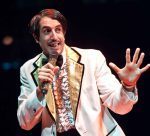




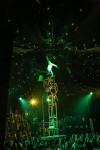

NM: Everyone I spoke to that saw Empire seemed dazzled by it. They gushed about the intimacy of the venue, the level of talent and the fact there were cocktails on hand.
RM: Well when I say that we get the best talent in the world, we really do. We really go out and find the best artists we possibly can. And I’d also say that you’re absolutely right, it is an entertainment that is best consumed while holding a drink. I don’t know many entertainments that aren’t best consumed that way, but we certainly encourage it. We try and create an environment of no rules. If you’re annoying other people or you’re disrupting the show we might get a bit grumpy, but generally we want people to come in and just relax and be part of it. It’s becoming part of a community. Everyone’s in the same room. When you go to the theatre, everyone’s in a different room from where the actors are. They’re up on a stage, there’s a curtain that closes that room off and then when it opens you’re looking into that room. In our shows everyone is sitting in one big lounge room together. We just want everyone to behave as you would if you were going to your friend’s house. It’s a lot of fun.
NM: You have another show called Vegas Nocturne. Is that something you would bring to Australia in 2016?
RM: Yeah, we’re really working hard on that. The Empire tour of Australia went for nearly two years, so if Absinthe went for two years in Australia we’d be definitely interested in looking for another show to bring to Australia.
If Absinthe does well in Australia and sells a lot of tickets, then we’d definitely bring Vegas Nocturne down there. We’d love to do that. Because that is a totally different show and focuses mostly on music. It’s a really interesting show.
NM: Is the version of Absinthe that we see in Australia identical to the show that played overseas or has it been tweaked slightly?
RM: We have a whole lot of cast members from Vegas coming over [to Australia] to do this. So I think we’ll go in presenting pretty much the Vegas show. We’ll all be there and we’ll see what we think.
People go to Vegas because they want to have a Hangover experience. They’ve seen the movie. You watch it when they’re checking in at Caesar’s Palace or one of the other great hotels there and their eyes are wide with excitement. You can see that their pupils are ready to go. They want that Hangover experience – they don’t want to get their teeth kicked out or end up with Mike Tyson’s tiger in their bathroom, but they just want to have a stupid fun time. That’s what Australians want to see in the theatre, something whacky and fun.
Look, it would be hard not to have a show on in Australia now and not comment on the knighthood scenario, so there will be some localization. I mean, isn’t that bizarre? I mean, I’m right wing but this guy [Tony Abbott] has lost the plot. I have nothing against the guy but that’s not the purpose of an honour system in Australia. It’s ridiculous.
NM: Are there any new shows in development?
RM: Yeah, we’re working on two shows right now. The way we work is that we put them into a 50-seat theatre in New York, very under the radar. Then we send them out to tour around a few places. Then we decide is this show for Vegas, or should it tour to Europe or Japan or one of the other markets that we go to.
We’re really excited about our development. This is a market that is going to explode over the next few years. It’s an enormous employment opportunity for young kids that want to get into the arts – skill based, vaudeville, burlesque, comedy-type entertainment.
Absinthe opens in Newcastle on Tuesday, February 17 and runs until March 1.
Tickets through Ticketek.

February 6, 2015
ALBUM REVIEW: THE DECEMBERISTS – What a Terrible World, What a Beautiful World
What A Terrible World, What A Beautiful World
EMI
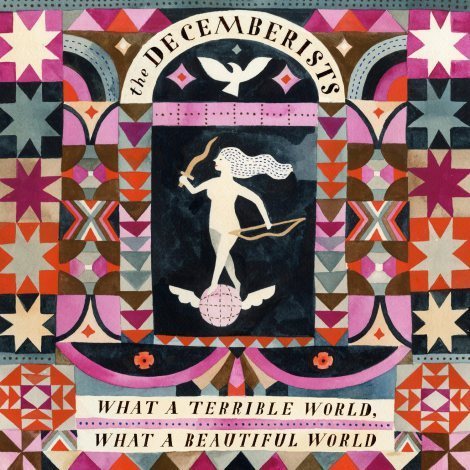 Decemberists frontman and principal songwriter Colin Meloy said in a recent Australian interview that the three children’s books he created with his wife, Carson Ellis, since the release of 2011’s The King Is Dead, satisfied his innate desire to craft narrative.
Decemberists frontman and principal songwriter Colin Meloy said in a recent Australian interview that the three children’s books he created with his wife, Carson Ellis, since the release of 2011’s The King Is Dead, satisfied his innate desire to craft narrative.
So on his band’s seventh full-length release, What a Terrible World, What a Beautiful World, we see rare glimpses of Meloy’s personal leanings and admissions. This is immediately evident on the wry opener ‘The Singer Address His Audience’, in which Meloy ironically dissects the relationship between band and fanbase. On ‘Philomena’, Meloy relives his youth and proclaims ‘All that I wanted in the world was just to see a naked girl‘.
Sonically, What a Terrible World is a throw-back to the pastoral, old-world pop folk and brevity of 2005’s Picaresque and much of 2006’s The Crane Wife. There’s no clear narrative thread between the songs. It is a vast contrast to the group’s 2009 folk-rock opera masterpiece, The Hazards of Love, and is a far cry from the country-rock of 2011’s The King is Dead.
But when Meloy and band crafts a record such as this, they draw on an esteemed array of artful songwriting techniques. The single, ‘Make You Better’, immediately evokes the joyous, resounding anthemic quality that defines The Decemberists’ sound. Elegant, rambling folk tracks like ‘Lake Song’ fit effortlessly alongside stripped-back Americana like ‘Carolina Low’. ‘Cavalry Captain’, with its brass hook, is one of the best tracks the band has ever released. These are the elements of a classic Decemberists record – songs that feel like short stories in collection by a single author.
Meloy remains one of the most verbose and eloquent of all lyricists in modern music, and the lush instrumentation provided by the incredible artists in his fold serve his poetry with stunning clarity. And in the record’s title, Meloy and co. articulate the divided opinion of most astute humans. But they also sum up the literary depth of their songbook – songs that are often as beautiful as they are dark. Terrible and beautiful – the dichotomy present in The Decemberists’ most stirring compositions.

February 2, 2015
Top 20 movies of 2014

Jake Gyllenhaal in Enemy
While the comic book universe remains the main focus for major Hollywood studios – and they are undeniably drawing people back into movie theatres – 2014 was a great year for smaller films. There was a host of low-budget films that had powerful and dark stories to tell. Here were my top 20 favourite movies released in Australia in 2014.
20. GODZILLA
Director: Gareth Edwards
British writer-director Gareth Edwards’ impressive 2010 feature Monsters proved the perfect resume for his big-budget reboot of the Godzilla franchise. Released 50 years after the beloved monster’s debut appearance in 1954’s Godzilla, Edwards’ update included new kaiju and a series of awe-inspiring set pieces.
19. THE ROVER
Director: David Michod
Australian director David Michod’s follow-up to his breakthrough success Animal Kingdom, is a bleak and boiling depiction of our near future. An economic collapse has turned the wasteland of Australia’s desert into a lawless frontier. Guy Pearce’s cold, ruthless performance is the film’s centrepiece and draws the viewer through many of the movie’s most tense sequences. While the final scene is perhaps not as profound as it may have been intended, The Rover is still an impressive experience and will maintain the interest surrounding Michod’s career.
18. ONLY LOVERS LEFT ALIVE
Director: Jim Jarmusch
Jim Jarmusch’s stylish vampire drama Only Lovers Left Alive explores an ancient marriage between two creatures whose love for each other is rivalled only by their worship of the arts. At its heart the film is a black comedy but the humour is measured and dry. Vampires are well and truly saturating popular culture but in these characters Jarmusch creates commentators on our modern-day ignorance and philistinism.
17. MAPS TO THE STARS
Director: David Cronenberg
Maps to the Stars might not be as clever or devastating a satire on Hollywood as David Lynch’s masterpiece Mulholland Dr., but Cronenberg’s own dark sensibilities serve him well in this twisted movie. Julianne Moore has never been better and rightfully won the Best Actress Award at Cannes. John Cusack returns to form as a dubious sell-help guru.
16. BIG HERO 6
Directors: Don Hall and Chris Williams
The Disney and Marvel juggernauts joined forces to create one of the most enjoyable movies of 2014. Big Hero 6 is equal parts thrilling and charming. The animation is often stunning and brings to life numerous innovative and refreshingly original action sequences and visuals. The inevitable sequel can not come soon enough.
15. JODOROWSKY’S DUNE
Director: Frank Pavich
When listening to Alejandro Jodorowsky’s wide-eyed gushing about the plans for his spiritual and mind-bending adaptation of Frank Herbert’s classic sci-fi novel Dune, it is hard not to be swept up in his passion and enthusiasm in much the same way that his talented team was in the mid-’70s. Jodorowsky was both inexperienced and experimental, two traits that scared Hollywood from bank-rolling his wild and, with the benefit of hindsight, ground-breaking take on how Dune would be adapted. The Chilean artist drew an array of talented people into his project, from Mick Jagger to David Carradine, Orson Welles, Pink Floyd, Salvador Dali and the late-great artist H.R. Giger. His version of Dune would have been legendary and, despite never being made, its echoes live on throughout science fiction cinema.
14. WHAT WE DO IN THE SHADOWS
Directors: Taika Waititi and Jemaine Clement
This hilarious and twisted mockumentary about four vampires in a Wellington share house should have had a much bigger cinematic audience, but will no doubt find a cult following in years to come. Drawing on every recognisable trope and facet of the vampire myth, What We Do In The Shadows is one of the funniest examples of the mockumentary tradition since This Is Spinal Tap.
13. THE BABADOOK
Director: Jennifer Kent
The psychological horror film The Babadook was an impressive debut from Australian actress, writer and director Jennifer Kent. The eerie, unsettling film is grounded by incredible performances from Essie Davis and Noah Wiseman, who play mother and son respectively. The Babadook wears its messages and metaphors on its sleeve, but should be applauded for its emotional depth – something lacking in the majority of modern scare flicks.
12. THE GUARDIANS OF THE GALAXY
Director: James Gunn
One of the saving graces of two recent Marvel blockbusters, The Avengers and Guardians of the Galaxy, was that they were put in the hands of genuinely clever filmmakers. Joss Whedon lifted The Avengers above the gloss of pure spectacle and imbued it with wit and charm. Similarly, James Gunn, a Troma-alumni, was allowed to bring his dark, irreverent humour to The Guardians of the Galaxy. And it paid off.
11. LOCKE
Director: Steven Knight
Taking place almost entirely within a moving car, Locke includes one of the year’s most stunning performances. In the titular role, Tom Hardy’s protagonist is a man attempting to return his own sense of order to a chaotic world. A tense, atmospheric and beautifully written piece.
Director: Bong Joon-ho
The innovative, visionary South Korean science fiction fantasy Snowpiercer seems to have slipped under the radar of many movie buffs this year. But this gritty dystopian drama deserves an audience. Adapted from a French graphic novel Le Transperceneige, Snowpiercer is set in 2031 on a frozen post-Apocalyptic Earth. The world has become an icy wasteland, the result of an experiment that was meant to reverse global warming but had the opposite effect. A number of human survivors have boarded the Snowpiercer, a “rattling ark” train that perpetually circumnavigates the globe. The passengers live out their lives in a class system that sees the wealthy enjoy luxuries at the front of the train and the poor crammed into the train’s tail like livestock. But the strong-willed leader Curtis Everett (Chris Evans), tired of his squalor in the tail, leads a revolution that sees a bloody march towards the front carriage, the home of Snowpiercer’s omnipresent Howard Hughes-like inventor Wilford.
With a bleak sense of humour, striking and memorable visuals, building tension, and an oddball performance from Tilda Swinton, Snowpiercer can be forgiven for borrowing many of its themes from classic science fiction like Nineteen Eighty-Four and Brave New World. It’s a highly ambitious effort from co-writer and director Bong Joon-ho (2006’s The Host) in his first English-language movie.

Chef
09. CHEF
Director: Jon Favreau
This was a gem from writer-director-actor Jon Favreau. Chef is a simple film that, like the culinary dishes served during its duration, has delicious ingredients that add up to a delectable whole. Favreau plays Carl Casper, the lauded head chef of Gauloise in Brentwood, California. He wants the restaurant’s menu to be ground-breaking but restaurant owner Riva (Dustin Hoffman) believes tried and true dishes are what bring patrons returning to the business. When Casper follows Riva’s orders and receives a scathing review from food critic Ramsey Michel (Oliver Platt), Casper has a mini-breakdown that sees him step away from Gauloise and rediscover his love of cooking through the restoration of an old food truck. With both his son, Percy, and friend Martin (John Leguizamo) in tow, he drives the food truck from Miami to Los Angeles, stopping each day to serve the locals his top-shelf dishes.
This is a small movie compared to Favreau’s recent works like Iron Man, Iron Man 2 and Cowboys & Aliens, and is strengthened by a superb ensemble cast that also includes Scarlett Johansson, Sofia Vergara, Bobby Cannavale and Robert Downey Jr. But it has a funny and sincere script that manages to get away with a lot of potentially cornball sentimentality.
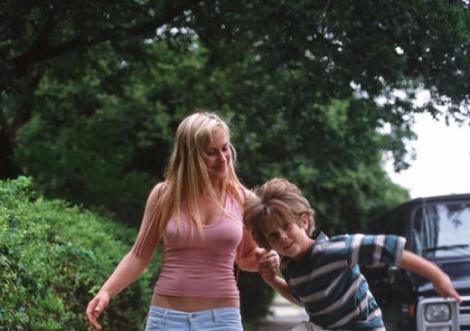
Boyhood
08. BOYHOOD
Director: Richard Linklater
Boyhood is as understated and meticulous as it is a genuine cinematic event. Filmed over 12 years with the same cast – Patricia Arquette and Ethan Hawke the only familiar faces – Richard Linklater’s document of American youth is without a plot, but is no less moving for it.
In Boyhood we watch actor Ellar Coltrane, who plays Mason, age from a wide-eyed six-year-old into an 18-year-old man. We experience the ups and downs of his life with ultra-realism, made possible by utterly convincing performances from the cast. But Linklater’s approach to the script is a methodical lesson in tone, resisting the temptation to sensationalise Mason’s childhood. Instead Boyhood allows the viewer to experience profound humanistic moments in the seemingly repetitive and universal nature of every day life. And in its two-hour-and-forty-five-minute duration there are only two clearly definable moments where the existential theme of the movie is directly alluded to.
Boyhood is a landmark achievement that may never be surpassed.
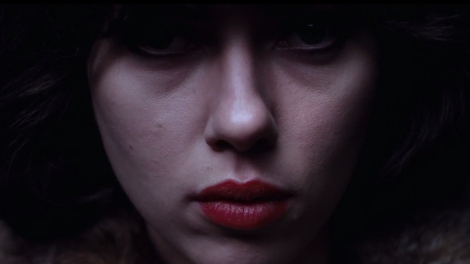
Under The Skin
07. UNDER THE SKIN
Director: Jonathan Glazer
An alien with a detached stare and the stunning looks of Scarlett Johansson drives a white van through the cold, austere streets of Scotland. The creature is hunting prey, choosing male pedestrians from the cabin of her vehicle before politely luring them into her passenger seat. The beautiful alien takes them to a small abandoned house. The men are expecting sex, but are instead drawn into a black pool of liquid and digested.
This is daring filmmaking. With a courageous and bold performance by Johansson at its centre, Under The Skin is haunting, ambitious and arresting.
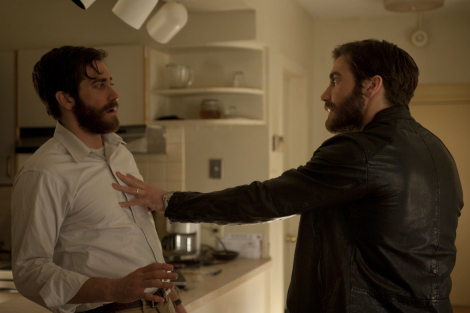
Enemy
06. ENEMY
Director: Denis Villeneuve
The most discussable and dissectible film of 2014 was Enemy, by French-Canadian director Denis Villeneuve. He reunites with actor Jake Gyllenhaal after their powerful work together on the thriller Prisoners.
Enemy is both puzzling and mesmerising, and deals in visual metaphor and atmosphere at the expense of conventional story-telling. Gyllenhaal plays Adam Bell, a solitary college professor who specialises in the history of totalitarian governments. He discovers the existence of Anthony Claire (also played by Gyllenhaal), who is his doppelgänger. Their lives inevitably entwine.
It really is a treat to see Jake Gyllenhaal make consistently fine and fascinating movies, seemingly having left the likes of The Prince of Persia and The Day After Tomorrow behind him to focus on dark, challenging movies in the vein of the film that introduced him to a wide audience – Donnie Darko.

Nebraska
05. NEBRASKA
Director: Alexander Payne
American writer-director Alexander Payne continued his near flawless body of work with the gentle black and white comedy Nebraska. The director’s empathy and compassion for his characters is again central to this film’s tone.
Woody Grant, played by Bruce Dern in a role that earned him an Oscar nomination and also the Best Actor gong at Cannes, is a crotchety old man who believes he has won a $1 million sweepstakes competition.
He insists on travelling from his Montana home to Nebraska to claim the money, even though the giveaway is nothing more than a piece of spam mail. Reluctantly, his son David (Will Forte) travels with him.
Nebraska is a heart-warming and funny road movie that explores familial relationships, particularly those between father and son.
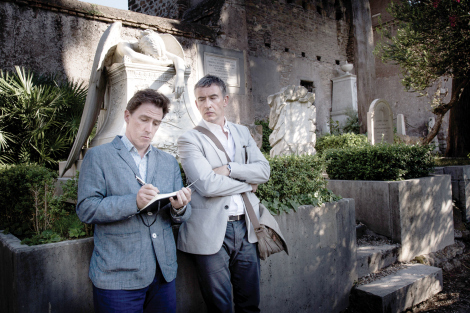
The Trip to Italy
04. THE TRIP TO ITALY
Director: Michael Winterbottom
Those that loved 2010’s The Trip were no doubt very eager to rejoin the fictionalised versions of actors Steve Coogan and Rob Brydon for another sojourn of stunning scenery, incredible food, cheeky banter and on-point impersonations.
As the title suggests, Coogan and Brydon are this time on an Italian driving tour from Liguria to Capri, stopping in at some of the favoured haunts of the great Romantic poets.
The film is dialogue driven, but when the conversations are this hilarious – and the leads so incredibly likeable – the result is extremely enjoyable.

Gone Girl
03. GONE GIRL
Director: David Fincher
In adapting her best-selling book for the screen, author Gillian Flynn was able to improve on her own work.
David Fincher’s film keeps the novel’s savage observations on modern relationships, the impacts of the global financial crisis and the media, but improves the pace and tension.
The bleak and dark comedy Gone Girl follows the disappearance of the beautiful and brilliant Amy Dunne (Rosamund Pike), and the subsequent investigation of her husband Nick (Ben Affleck).
The casting is perfect, the tone cold and elegant, and the finale unsettling.

Calvary
02. CALVARY
Director: John Michael McDonagh
According to Gospels, Calvary was the location beyond Jerusalem’s walls where Jesus was crucified.
This is an entry into the themes of this devastatingly moving movie.
It also contains the year’s best opening scene.
Catholic priest Father James (Brendan Gleeson) is visited in the confessional by a man who explicitly reveals he was sexually abused by a priest as a young boy.
The faceless man tells Father James that a fitting punishment for the Catholic Church would be the murder of a good priest, and that he intends to kill him the following Sunday.
Calvary follows the ensuing week of Father James’ life and it’s the portrait of a man whose unshakable faith in the goodness of humanity is tested by the residents of his parochial Irish village.

Nightcrawler
01. NIGHTCRAWLER
Director: Dan Gilroy
Jake Gyllenhaal gives one of the year’s creepiest performances as Lou Bloom in Nightcrawler.
The gaunt actor plays a charasmatic but disturbing loner who discovers he can make money by filming gory car accidents and crime scenes, and then sell the footage to TV news stations.
As Bloom’s dogged ascendence into financial success unfolds, he pushes the limits of his vocation into very grim territory.
Set mostly at night on the streets of Los Angeles, this neo-noir psycho-thriller is not just a satire on our insatiable need for graphic news.
It also has all the hallmarks of a modern classic.

January 12, 2015
Top 20 albums of 2014
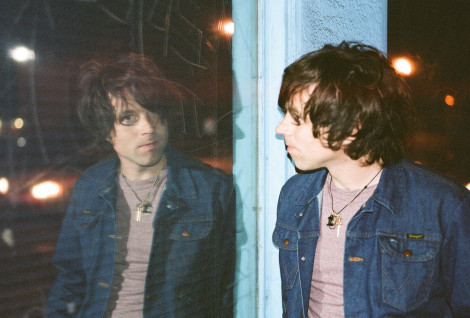
Ryan Adams
As I started piecing together my favourite 20 records of 2014 list, I thought I had most of my choices locked in by about July. Beautiful and forward-thinking albums, in a diverse range of genres, appeared in the first half of the year. But the final six months of 2014 saw more quality records spring from the ether. They came thick and fast – and many by Aussie artists. Seven of the artists on this list are homebaked (and if we recruit New Zealand’s Liam Finn as one of our own, which we probably should, then it’s technically eight). But you will also notice the triumphant continuation of some stellar careers, namely Pixies, Weezer, Beck and The Tea Party. They’re all showing the kids how it’s done. Long may they run. And, like any epic list as such as this, some incredibly tough decisions were made. More time could have easily seen the creation of a top 50 list. But, alas, I can only provide the cream of the crop.
SPOTIFY PLAYLIST: TOP 20 RECORDS OF 2014
20. WEEZER
Everything Will Be Alright In The End
Republic
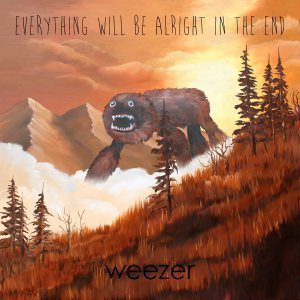 Weezer’s ninth record was an overwhelming return to form, bottling the pure power pop direction of their classic self-titled records. It’s as if singer-songwriter Rivers Cuomo buried these tracks in a time capsule in the mid-90s and dug them out in January 2014. The record’s gems include the Bethany Cosentino duet ‘Go Away’, the Justin Hawkins collaboration ‘I’ve Had It Up To Here’, and ‘The British Are Coming’. The album’s title indicates the arduous writing process, and Cuomo eventually distilled 200 new songs down to the tracks on Everything Will Be Alright In The End. Those that made the cut are rollicking, youthful anthems with chugging guitar riffs – the sound of a band not so much treading familiar ground, but really playing to their strengths. The finale is a three-parter, prog-rock style, that builds into a thrilling instrumental crescendo.
Weezer’s ninth record was an overwhelming return to form, bottling the pure power pop direction of their classic self-titled records. It’s as if singer-songwriter Rivers Cuomo buried these tracks in a time capsule in the mid-90s and dug them out in January 2014. The record’s gems include the Bethany Cosentino duet ‘Go Away’, the Justin Hawkins collaboration ‘I’ve Had It Up To Here’, and ‘The British Are Coming’. The album’s title indicates the arduous writing process, and Cuomo eventually distilled 200 new songs down to the tracks on Everything Will Be Alright In The End. Those that made the cut are rollicking, youthful anthems with chugging guitar riffs – the sound of a band not so much treading familiar ground, but really playing to their strengths. The finale is a three-parter, prog-rock style, that builds into a thrilling instrumental crescendo.
19. LYN BOWTELL
Heart of Sorrow
Sony
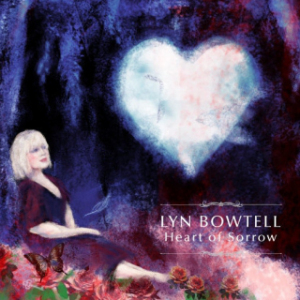 If the album name Heart of Sorrow gives you the impression Lyn Bowtell’s 2014 record is a tad melancholy, then you’re not far off the mark. But, like any talented songwriter, Bowtell transforms the heartache of an ended relationship into something not just emotionally moving but also both empowering and uplifting. Produced by Shane Nicholson, Heart of Sorrow sees Bowtell on not just vocals but also acoustic guitar, ukulele, omnichord and percussion. And while the singer is a Tamworth Country Music Festival regular and former Toyota Star Maker winner, Bowtell does not dwell in country music conventions – Heart of Sorrow is an atmospheric and eclectic collection.
If the album name Heart of Sorrow gives you the impression Lyn Bowtell’s 2014 record is a tad melancholy, then you’re not far off the mark. But, like any talented songwriter, Bowtell transforms the heartache of an ended relationship into something not just emotionally moving but also both empowering and uplifting. Produced by Shane Nicholson, Heart of Sorrow sees Bowtell on not just vocals but also acoustic guitar, ukulele, omnichord and percussion. And while the singer is a Tamworth Country Music Festival regular and former Toyota Star Maker winner, Bowtell does not dwell in country music conventions – Heart of Sorrow is an atmospheric and eclectic collection.
18. HUSKY
Ruckers Hill
Liberation
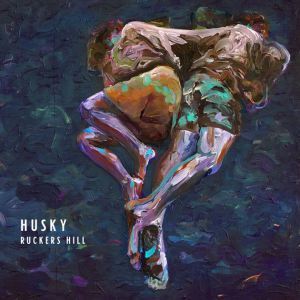 Penned by singer-songwriter Husky Gawenda as he roamed the streets of Melbourne’s suburbs in a state of restless reflection, Ruckers Hill‘s kinetic folk dynamics and echoed golden harmonies do conjure the masters like Crosby, Stills and Nash and Simon and Garfunkel, and more recently Fleet Foxes. But Husky’s music is far more than accomplished tribute. Ruckers Hill‘s pastoral instrumentation is captivating. Only a strong and deeply distracted listener could turn this album off after hearing the haunting build-up of the opener and title track. And ‘I’m Not Coming Back’ is sublime.
Penned by singer-songwriter Husky Gawenda as he roamed the streets of Melbourne’s suburbs in a state of restless reflection, Ruckers Hill‘s kinetic folk dynamics and echoed golden harmonies do conjure the masters like Crosby, Stills and Nash and Simon and Garfunkel, and more recently Fleet Foxes. But Husky’s music is far more than accomplished tribute. Ruckers Hill‘s pastoral instrumentation is captivating. Only a strong and deeply distracted listener could turn this album off after hearing the haunting build-up of the opener and title track. And ‘I’m Not Coming Back’ is sublime.
17. FUTURE ISLANDS
Singles
4AD
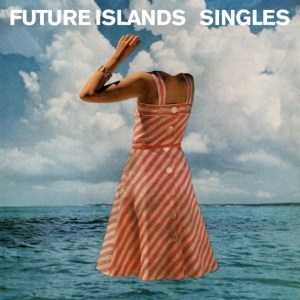 It takes serious balls to call your new record Singles. But, luckily for Future Islands, they have both balls and the talent to back them up. As radiant as this synth-pop album is, Future Islands are best experienced on stage. Singer Samuel Herring dresses like a Bible salesman, sings like Bobby Womack and gesticulates like a firebrand preacher. And while Singles is an adequate indication of their sound, capturing the soulful quality of Herring’s voice, it has spacious, shimmering ’80s production that could add a dash of sex to any social gathering. Singles is the soundtrack to this summer and many others to come.
It takes serious balls to call your new record Singles. But, luckily for Future Islands, they have both balls and the talent to back them up. As radiant as this synth-pop album is, Future Islands are best experienced on stage. Singer Samuel Herring dresses like a Bible salesman, sings like Bobby Womack and gesticulates like a firebrand preacher. And while Singles is an adequate indication of their sound, capturing the soulful quality of Herring’s voice, it has spacious, shimmering ’80s production that could add a dash of sex to any social gathering. Singles is the soundtrack to this summer and many others to come.
16. WAGONS
Acid Rain and Sugar Cane
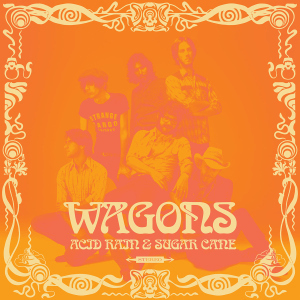 There’s many twists and turns on the swampy Southern stomp of baritone-voiced rocker Henry Wagons’ latest effort. Lyrical gems like “I used to dance with the Devil on his burning coals, I had a billion little pieces of glass in my soul, until I found you” reveal Wagons as a wry, self-deprecating romantic. There are slow-burning, wistful tunes with brass flourishes alongside ballsy ’70s rockers like ‘Chase The Eclipse’. And there are playful tempo and mood changes on tracks like ‘Search the Streets’ that give Acid Rain and Sugar Cane a dark, cinematic quality – and the dichotomy suggested in the title.
There’s many twists and turns on the swampy Southern stomp of baritone-voiced rocker Henry Wagons’ latest effort. Lyrical gems like “I used to dance with the Devil on his burning coals, I had a billion little pieces of glass in my soul, until I found you” reveal Wagons as a wry, self-deprecating romantic. There are slow-burning, wistful tunes with brass flourishes alongside ballsy ’70s rockers like ‘Chase The Eclipse’. And there are playful tempo and mood changes on tracks like ‘Search the Streets’ that give Acid Rain and Sugar Cane a dark, cinematic quality – and the dichotomy suggested in the title.
15. ADAM COHEN
We Go Home
Sony
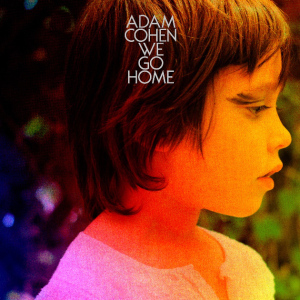 Adam Cohen is the first to admit that his voice bears an eerie resemblance to that of his legendary father, Leonard. And with We Go Home, the son demonstrates how musical magic can be transferred by the miracle of genetics. To find inspiration Cohen returned to his childhood homes, in both Montreal and on the Greek island of Hydra, and recorded live with his band in those hallowed rooms. While We Go Home has slow-burning, brooding and wry moments that channel those of his genius father, and even lyrics that directly reference Leonard’s work, many of the songs feel modern and borne of Adam’s individuality. We Go Home stands as a poignant and intimate rumination on a man’s relationship with his father and his duty to continue a family legacy.
Adam Cohen is the first to admit that his voice bears an eerie resemblance to that of his legendary father, Leonard. And with We Go Home, the son demonstrates how musical magic can be transferred by the miracle of genetics. To find inspiration Cohen returned to his childhood homes, in both Montreal and on the Greek island of Hydra, and recorded live with his band in those hallowed rooms. While We Go Home has slow-burning, brooding and wry moments that channel those of his genius father, and even lyrics that directly reference Leonard’s work, many of the songs feel modern and borne of Adam’s individuality. We Go Home stands as a poignant and intimate rumination on a man’s relationship with his father and his duty to continue a family legacy.
14. THE TEA PARTY
The Ocean at the End
Sony
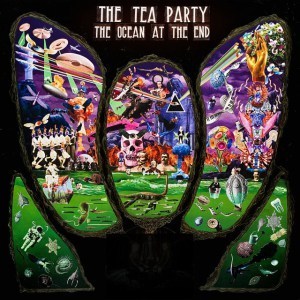 After 10 years away, it would have been foolish to think Canada’s mystic prog-rockers The Tea Party would return with anything less than a bold, stadium-sized record. The Ocean at the End saw the band end their hiatus, bury the hatchet and lock themselves away for 18 months until they had an album worthy of their monstrous back catalogue. The Ocean at the End contains Jeff Martin’s spiritual lyrics and deep, melodramatic vocals, Burrows’ Bonham-esque drumming and Stuart Chatwood’s thundering bass. The classic thrust of the album’s epic set pieces have a distinctly ’70s vibe, whether its the shimmering Zeppelin-esque opener ‘The L.o.C’, the gargantuan title track or the heavy blues stomper ‘The Cass Corridor’. The Ocean at the End is a robust return from the power trio and one of the year’s finest rock albums.
After 10 years away, it would have been foolish to think Canada’s mystic prog-rockers The Tea Party would return with anything less than a bold, stadium-sized record. The Ocean at the End saw the band end their hiatus, bury the hatchet and lock themselves away for 18 months until they had an album worthy of their monstrous back catalogue. The Ocean at the End contains Jeff Martin’s spiritual lyrics and deep, melodramatic vocals, Burrows’ Bonham-esque drumming and Stuart Chatwood’s thundering bass. The classic thrust of the album’s epic set pieces have a distinctly ’70s vibe, whether its the shimmering Zeppelin-esque opener ‘The L.o.C’, the gargantuan title track or the heavy blues stomper ‘The Cass Corridor’. The Ocean at the End is a robust return from the power trio and one of the year’s finest rock albums.
13. BECK
Morning Phase
Capitol
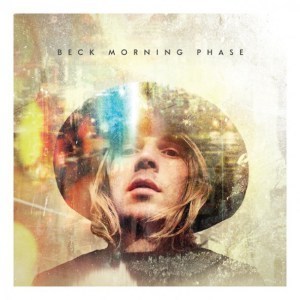 When Beck releases a new record, most music purists rightfully stop to sit down and absorb it. Morning Phase rewards those listeners, with the consistently fascinating songwriter delivering a stunning dream-folk opus that returns to the sensibilities of 2002’s Sea Change. But, dare I say it, Morning Phase is even more wondrous. Using much of the same band as Sea Change, including both drummer Joey Waronker (who can also be heard on Steve Smyth’s Exits) and his composer father David Campbell, Beck’s latest musical sojourn is essential listening.
When Beck releases a new record, most music purists rightfully stop to sit down and absorb it. Morning Phase rewards those listeners, with the consistently fascinating songwriter delivering a stunning dream-folk opus that returns to the sensibilities of 2002’s Sea Change. But, dare I say it, Morning Phase is even more wondrous. Using much of the same band as Sea Change, including both drummer Joey Waronker (who can also be heard on Steve Smyth’s Exits) and his composer father David Campbell, Beck’s latest musical sojourn is essential listening.
12. LIAM FINN
The Nihilist
Liberation Records
 I was lucky enough to hear Liam Finn play the entirety of his new record, The Nihilist, in a tiny Brooklyn venue in April this year. My mind was blown. While we all know the musicality that Finn has in his genes, this sublime and superbly eccentric pop-rock opus confirms that the apple has fallen quite far from his father Neil’s tree and rolled through time, spinning through the deep-space wormholes previously travelled by Harry Nilsson, John Lennon, Jeff Lynne, Prince and, more recently, Luke Steele and Dan Kelly. Finn has certainly explored the furthest reaches of his creativity on The Nihilist and, as the title suggests, is unshackled by any previous rules. The anarchist streak is there, infused in the fuzzy, synth-sparkled production, and alive in Finn’s impressive guitar work. ‘Burn Up The Road’ is a particular highlight.
I was lucky enough to hear Liam Finn play the entirety of his new record, The Nihilist, in a tiny Brooklyn venue in April this year. My mind was blown. While we all know the musicality that Finn has in his genes, this sublime and superbly eccentric pop-rock opus confirms that the apple has fallen quite far from his father Neil’s tree and rolled through time, spinning through the deep-space wormholes previously travelled by Harry Nilsson, John Lennon, Jeff Lynne, Prince and, more recently, Luke Steele and Dan Kelly. Finn has certainly explored the furthest reaches of his creativity on The Nihilist and, as the title suggests, is unshackled by any previous rules. The anarchist streak is there, infused in the fuzzy, synth-sparkled production, and alive in Finn’s impressive guitar work. ‘Burn Up The Road’ is a particular highlight.
11. FIRST AID KIT
Stay Gold
Wichita/Columbia
 When stunning Swedish sisters Johanna and Klara Söderberg released their sublime 2012 record, The Lion’s Roar, it was difficult to imagine they could write anything more gorgeous. But this year they proved they had more beauty to offer with Stay Gold. They’ve expanded their sound on their third release, floating their aching, other-wordly harmonies over a 13-piece orchestra that swells and fades in the luscious folk atmosphere. The sisters clearly grew up on ’60s Americana, and write timeless masterpieces that echo of that era. Lyrically, Stay Gold illustrates more personal and mature introspection, making this record all the more goosebump-inducing and emotionally devastating.
When stunning Swedish sisters Johanna and Klara Söderberg released their sublime 2012 record, The Lion’s Roar, it was difficult to imagine they could write anything more gorgeous. But this year they proved they had more beauty to offer with Stay Gold. They’ve expanded their sound on their third release, floating their aching, other-wordly harmonies over a 13-piece orchestra that swells and fades in the luscious folk atmosphere. The sisters clearly grew up on ’60s Americana, and write timeless masterpieces that echo of that era. Lyrically, Stay Gold illustrates more personal and mature introspection, making this record all the more goosebump-inducing and emotionally devastating.
10. DE’MAY
If We Don’t Leave Now
Laughing Outlaw
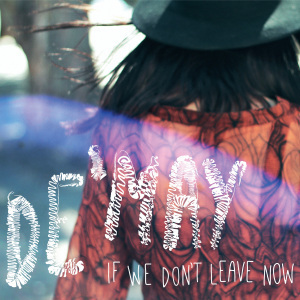 The restless, smoky atmosphere of Demi Mitchell’s captivating debut record If We Don’t Leave Now is perhaps best defined by the hypnotic lulling guitar and piano of Red Wine Fever. The lyric “I’ve been dancing with the Devil with two left feet” seems to perfectly distill De’May’s restless introspection and evocative lyrics. As does opener Chelsea Bridge, in which beguiling songstress is followed through the streets of England, France and Berlin by the presence of a lover left behind. This album is perfectly suited to the conditions in which it was almost certainly written – in the presence of red wine, gin and candlelight.
The restless, smoky atmosphere of Demi Mitchell’s captivating debut record If We Don’t Leave Now is perhaps best defined by the hypnotic lulling guitar and piano of Red Wine Fever. The lyric “I’ve been dancing with the Devil with two left feet” seems to perfectly distill De’May’s restless introspection and evocative lyrics. As does opener Chelsea Bridge, in which beguiling songstress is followed through the streets of England, France and Berlin by the presence of a lover left behind. This album is perfectly suited to the conditions in which it was almost certainly written – in the presence of red wine, gin and candlelight.
09. DAVEY LANE
Atonally Young
Field Recordings
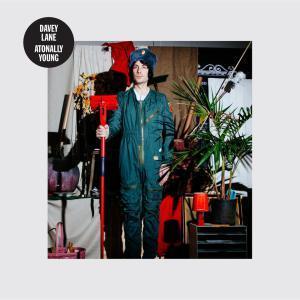 Appearing in the broader public consciousness as the young axe-wielder that joined You Am I before the release of their commercially successful Dress Me Slowly record, Davey Lane has since been a quiet achiever as a solo artist and singer. He released two records as the principal songwriter and frontman of Brit-rock-inspired group The Pictures, penning stadium sized tunes with killer riffs and instantly infectious hooks. But last year Davey Lane spread his wings further with The Good Borne of Bad Tymes, an EP released under his own name. It was followed this year by the release of a second offering, debut album Atonally Young. If it is not one of the best rock albums of 2014, then it is certainly the best Australian rock record of the year. The album proves Lane’s status as a clever craftsman as it takes the listener on a journey through both his musical tastes and his wild imagination. While there’s no major departure from his Brit-rock leanings there is certainly a far broader scope, with elements of psychedelia, Brit-punk, ’70s glam and power pop.
Appearing in the broader public consciousness as the young axe-wielder that joined You Am I before the release of their commercially successful Dress Me Slowly record, Davey Lane has since been a quiet achiever as a solo artist and singer. He released two records as the principal songwriter and frontman of Brit-rock-inspired group The Pictures, penning stadium sized tunes with killer riffs and instantly infectious hooks. But last year Davey Lane spread his wings further with The Good Borne of Bad Tymes, an EP released under his own name. It was followed this year by the release of a second offering, debut album Atonally Young. If it is not one of the best rock albums of 2014, then it is certainly the best Australian rock record of the year. The album proves Lane’s status as a clever craftsman as it takes the listener on a journey through both his musical tastes and his wild imagination. While there’s no major departure from his Brit-rock leanings there is certainly a far broader scope, with elements of psychedelia, Brit-punk, ’70s glam and power pop.
08. THE WAR ON DRUGS
Lost In The Dream
Inertia/Secretly Canadian
 It’s safe to assume that Lost In The Dream will feature large in most Top 10 lists this year. So it should. The third album from the Philadelphia quartet, led by mastermind Adam Granduciel, and counting Kurt Vile amongst its former members, is indeed an echoed, dreamy folk-rock album. It is a lush, layered excursion that straddles the influences of both Americana and some of Montreal’s grandiose indie-pop acts. It’s as if Kevin Shields collaborated and produced an Arcade Fire album. Though diverse in mood, from upbeat tracks like Red Eyes to chiming slow-burners like ‘Suffering’, Lost In The Dream is cohesive and consistent, placing you in a trance from which you never want to wake.
It’s safe to assume that Lost In The Dream will feature large in most Top 10 lists this year. So it should. The third album from the Philadelphia quartet, led by mastermind Adam Granduciel, and counting Kurt Vile amongst its former members, is indeed an echoed, dreamy folk-rock album. It is a lush, layered excursion that straddles the influences of both Americana and some of Montreal’s grandiose indie-pop acts. It’s as if Kevin Shields collaborated and produced an Arcade Fire album. Though diverse in mood, from upbeat tracks like Red Eyes to chiming slow-burners like ‘Suffering’, Lost In The Dream is cohesive and consistent, placing you in a trance from which you never want to wake.
07. FIREKITES
Closing Forever Sky
Spunk Records
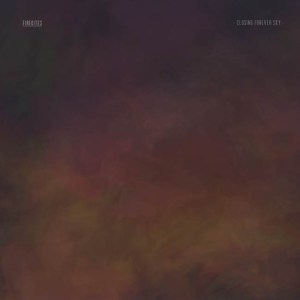 On their 2009 debut record, The Bowery, Firekites gave us a sweet, wistful indie-folk record. With crisp acoustic guitar parts that playfully intertwined amid organic percussion and Tim McPhee and Jane Tyrrell’s vocals, the album captured fond suburban memories and small moments of significance. It was music best played at either sunrise or sunset. It was radiant. Closing Forever Sky is Firekites music that breathes best at night, deconstructing the pristine qualities of The Bowery and rebuilding them into a darker, more spacious and atmospheric layer cake. It’s as if the dream-like opening textures of Sonic Youth’s ‘Candle’ have been expanded into a full-length musical study. The result is something beautiful, hypnotic and meditative.
On their 2009 debut record, The Bowery, Firekites gave us a sweet, wistful indie-folk record. With crisp acoustic guitar parts that playfully intertwined amid organic percussion and Tim McPhee and Jane Tyrrell’s vocals, the album captured fond suburban memories and small moments of significance. It was music best played at either sunrise or sunset. It was radiant. Closing Forever Sky is Firekites music that breathes best at night, deconstructing the pristine qualities of The Bowery and rebuilding them into a darker, more spacious and atmospheric layer cake. It’s as if the dream-like opening textures of Sonic Youth’s ‘Candle’ have been expanded into a full-length musical study. The result is something beautiful, hypnotic and meditative.
06. PIXIES
Indie Cindy
Pixiesmusic/PIAS
 Indie Cindy, originally released as three EPs and the legendary band’s first studio release since 1991, somehow recaptured the darkness and twisted beauty of the Pixies’ finest work. Even without bassist Kim Deal. Opening with the metal thump of ‘What Goes Boom’, the record documents a fiercely original act that has influenced many but never been emulated. Tracks like the dreamy ‘Greens and Blues’ and the anthem rock of ‘Another Toe In The Ocean’ stand amongst some of the Pixies’ finest surf-drenched, sunny, punked up, guitar-driven classics. Black Francis’ lyrics are typically obtuse and wry, David Lovering’s drums are relentless and dynamic and Joey Santiago’s guitar-work is gigantic, adding texture and colour to every track. Indie Cindy echoes of past glories but is so vehemently modern, the mark of a group that was – and still is – ahead of its time.
Indie Cindy, originally released as three EPs and the legendary band’s first studio release since 1991, somehow recaptured the darkness and twisted beauty of the Pixies’ finest work. Even without bassist Kim Deal. Opening with the metal thump of ‘What Goes Boom’, the record documents a fiercely original act that has influenced many but never been emulated. Tracks like the dreamy ‘Greens and Blues’ and the anthem rock of ‘Another Toe In The Ocean’ stand amongst some of the Pixies’ finest surf-drenched, sunny, punked up, guitar-driven classics. Black Francis’ lyrics are typically obtuse and wry, David Lovering’s drums are relentless and dynamic and Joey Santiago’s guitar-work is gigantic, adding texture and colour to every track. Indie Cindy echoes of past glories but is so vehemently modern, the mark of a group that was – and still is – ahead of its time.
05. TV ON THE RADIO
Seeds
EMI
 TV On The Radio have always struck me as similar to that thawed alien from John Carpenter’s The Thing – they’re a shape-shifting blob that’s absorbed the DNA of musical genres across all time and dimensions. What does the real TV On The Radio sound like? There’s no definable answer beyond the identification of a number of traits: inventive, experimental, odd, mesmerising, dynamic. They’re essentially a rock band, but the Brooklyn quartet always keeps the listener guessing and, most of the time, engaged. Seeds is TV On The Radio at both their most accessible and immediately engaging. This is by no means an attempt to cross into the mainstream, but it does feel like the group have allowed pop convention – particularly melodic hooks – to share equal airspace with their eccentric arrangements. Seeds is an appropriate name too, because this truly brilliant record grows and grows with repeated listens. It’s at times moving and in other moments dance-inducing. Very few bands can be this diverse without seeming unconvincing. But TV On The Radio’s latest effort never falls short of impressive intricacy or authenticity.
TV On The Radio have always struck me as similar to that thawed alien from John Carpenter’s The Thing – they’re a shape-shifting blob that’s absorbed the DNA of musical genres across all time and dimensions. What does the real TV On The Radio sound like? There’s no definable answer beyond the identification of a number of traits: inventive, experimental, odd, mesmerising, dynamic. They’re essentially a rock band, but the Brooklyn quartet always keeps the listener guessing and, most of the time, engaged. Seeds is TV On The Radio at both their most accessible and immediately engaging. This is by no means an attempt to cross into the mainstream, but it does feel like the group have allowed pop convention – particularly melodic hooks – to share equal airspace with their eccentric arrangements. Seeds is an appropriate name too, because this truly brilliant record grows and grows with repeated listens. It’s at times moving and in other moments dance-inducing. Very few bands can be this diverse without seeming unconvincing. But TV On The Radio’s latest effort never falls short of impressive intricacy or authenticity.
04. BOMBAY BICYCLE CLUB
So Long, See You Tomorrow
Island
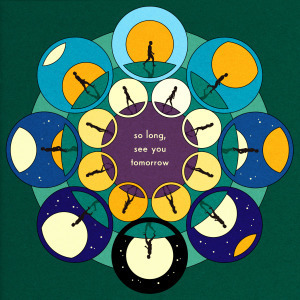 Bombay Bicycle Club’s first three records were the work of a band with a penchant for interesting and incredibly melodic power pop, comparable to other “calypso pop” bands but with far more emotional resonance than the surface sheen of their contemporaries. So Long, See You Tomorrow, which perplexingly takes its name from the short and dark 1979 novel by American author William Maxwell, is a joyous and lusciously produced album comparable to some of Mew’s finest work. Frontman Jack Steadman wrote the songs while touring through Japan, India and Turkey and those world influences are evident, but they’re more a spiritual and euphoric texture that solders together the immense and diverse array of instruments and ideas. It all comes together and makes sense, while both leaving the listener guessing and allowing the tracks to unfurl with repeated listens. So Long feels youthful yet is undeniably the work of songwriters and musicians with burgeoning wisdom and exploding craftsmanship. A truly masterful record.
Bombay Bicycle Club’s first three records were the work of a band with a penchant for interesting and incredibly melodic power pop, comparable to other “calypso pop” bands but with far more emotional resonance than the surface sheen of their contemporaries. So Long, See You Tomorrow, which perplexingly takes its name from the short and dark 1979 novel by American author William Maxwell, is a joyous and lusciously produced album comparable to some of Mew’s finest work. Frontman Jack Steadman wrote the songs while touring through Japan, India and Turkey and those world influences are evident, but they’re more a spiritual and euphoric texture that solders together the immense and diverse array of instruments and ideas. It all comes together and makes sense, while both leaving the listener guessing and allowing the tracks to unfurl with repeated listens. So Long feels youthful yet is undeniably the work of songwriters and musicians with burgeoning wisdom and exploding craftsmanship. A truly masterful record.
03. RYAN ADAMS
Ryan Adams
Sony
 In the three years since his stripped-back acoustic record Ashes & Fire, the world’s greatest songwriter, aka Ryan Adams, formed a punk band called Pornography and in his own studio, Pax Am, produced artists like Fall Out Boy and Jenny Lewis. He also found the time to put together a new post-Cardinals studio band, which includes Aussie bass prodigy Tal Wilkenfeld, and make a self-titled rock record. The result is a beautiful marriage of dark and light shades that echoes of Springsteen, and includes guest appearances from actor Johnny Depp and Adams’ wife Mandy Moore. From slick, masterful rockers like ‘Stay With Me’ and ‘Trouble’ to an effortless ballad like ‘My Wrecking Ball’, the tracks on Ryan Adams combine to form a modern classic of a record. But the true nature of the songwriter’s genius is how the album tracks step forward after repeated listens – ‘I Just Might’ and ‘Kim’ emerge as some of the finest rock songs of Adams’ astonishing and indisputably flawless back catalogue.
In the three years since his stripped-back acoustic record Ashes & Fire, the world’s greatest songwriter, aka Ryan Adams, formed a punk band called Pornography and in his own studio, Pax Am, produced artists like Fall Out Boy and Jenny Lewis. He also found the time to put together a new post-Cardinals studio band, which includes Aussie bass prodigy Tal Wilkenfeld, and make a self-titled rock record. The result is a beautiful marriage of dark and light shades that echoes of Springsteen, and includes guest appearances from actor Johnny Depp and Adams’ wife Mandy Moore. From slick, masterful rockers like ‘Stay With Me’ and ‘Trouble’ to an effortless ballad like ‘My Wrecking Ball’, the tracks on Ryan Adams combine to form a modern classic of a record. But the true nature of the songwriter’s genius is how the album tracks step forward after repeated listens – ‘I Just Might’ and ‘Kim’ emerge as some of the finest rock songs of Adams’ astonishing and indisputably flawless back catalogue.
02. STEVE SMYTH
Exits
Ivy League
 Nomadic troubadour Steve Smyth is a truly unique talent and his mesmerising vocals have drawn many comparisons. His voice shifts effortlessly between the haunting lilt of Jeff Buckley and the gravelly depths of Tom Waits. On his second album, Exits, Smyth also proves himself a master songwriter, drawing together innumerable influences gleaned from his travels around the world; rock, folk, blues and gypsy swagger. From the moving ballad Written or Spoken to the Australian anthem South Land, Exits is a record that you – despite the title – will not want to leave any time soon.
Nomadic troubadour Steve Smyth is a truly unique talent and his mesmerising vocals have drawn many comparisons. His voice shifts effortlessly between the haunting lilt of Jeff Buckley and the gravelly depths of Tom Waits. On his second album, Exits, Smyth also proves himself a master songwriter, drawing together innumerable influences gleaned from his travels around the world; rock, folk, blues and gypsy swagger. From the moving ballad Written or Spoken to the Australian anthem South Land, Exits is a record that you – despite the title – will not want to leave any time soon.
ALBUM OF THE YEAR
01. JAMES VINCENT McMORROW
Post Tropical
EMI
 From the first notes of opener ‘Cavalier’, it’s apparent that Dublin’s James Vincent McMorrow has given the world a stunning gift this year. His vocals across Post Tropical are fragile, like shards of melting glass, and bring the listener an ecstasy that is difficult to quantify. Leaving behind the acoustic folk of his previous release, the singer-songwriter opts for icy, piercing vocal overdubs, stinging organ chords and vast, spacious production. His stunning voice floats across you, buoyed by transcendental melodies. And when you think Post Tropical can’t contain any more beauty it ends with ‘Outside, Digging’, a track that words will never do justice. Just listen to it and have your spirit uplifted.
From the first notes of opener ‘Cavalier’, it’s apparent that Dublin’s James Vincent McMorrow has given the world a stunning gift this year. His vocals across Post Tropical are fragile, like shards of melting glass, and bring the listener an ecstasy that is difficult to quantify. Leaving behind the acoustic folk of his previous release, the singer-songwriter opts for icy, piercing vocal overdubs, stinging organ chords and vast, spacious production. His stunning voice floats across you, buoyed by transcendental melodies. And when you think Post Tropical can’t contain any more beauty it ends with ‘Outside, Digging’, a track that words will never do justice. Just listen to it and have your spirit uplifted.

December 14, 2014
Davey Lane: interview
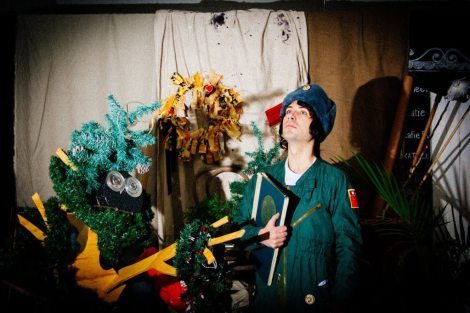 Appearing in the broader public consciousness as the young axe-wielder that joined You Am I before the release of their commercially successful Dress Me Slowly record, Davey Lane has since been a quiet achiever as a solo artist and singer. He released two records as the principal songwriter and frontman of Brit-rock-inspired group The Pictures, penning stadium sized tunes with killer riffs and instantly infectious hooks. But last year Davey Lane spread his wings further with The Good Borne of Bad Tymes, an EP released under his own name. It was followed this year by the release of a second offering, debut album Atonally Young. If it is not one of the best rock albums of 2014, then it is certainly the best Australian rock record of the year. The album proves Lane’s status as a master song craftsman as it takes the listener on a journey through both his musical tastes and his wild imagination. I had the privilege of chatting to Lane last month for a Maitland Mercury feature article. Unfortunately I could not fit all of Lane’s quotes into the story so here on Meadowlake Street I have published the full transcript of our conversation. Amongst the topics of discussion were his songwriting process, meeting his hero Brian May and the upcoming You Am I record. Enjoy.
Appearing in the broader public consciousness as the young axe-wielder that joined You Am I before the release of their commercially successful Dress Me Slowly record, Davey Lane has since been a quiet achiever as a solo artist and singer. He released two records as the principal songwriter and frontman of Brit-rock-inspired group The Pictures, penning stadium sized tunes with killer riffs and instantly infectious hooks. But last year Davey Lane spread his wings further with The Good Borne of Bad Tymes, an EP released under his own name. It was followed this year by the release of a second offering, debut album Atonally Young. If it is not one of the best rock albums of 2014, then it is certainly the best Australian rock record of the year. The album proves Lane’s status as a master song craftsman as it takes the listener on a journey through both his musical tastes and his wild imagination. I had the privilege of chatting to Lane last month for a Maitland Mercury feature article. Unfortunately I could not fit all of Lane’s quotes into the story so here on Meadowlake Street I have published the full transcript of our conversation. Amongst the topics of discussion were his songwriting process, meeting his hero Brian May and the upcoming You Am I record. Enjoy.
You released the EP The Good Borne of Bad Tymes last year and your debut record Atonally Young this year. Did you view the EP as an indication for your fans as to what the record might sound like? Or do you view them more separately?
With the EP, up until that point I’d been working on about 15 songs. I obviously had a certain direction in mind. But I sat down with those 15 songs and worked out not only which ones were the strongest but also which ones were maybe a little bit of a left turn in terms of what people would expect from me. As much as I’m proud of a fair whack of what we did with The Pictures I kind of wanted to step away from that guitar-heavy, pop-rock sound. I think the songs from the EP were decided with that in mind.
There was a bunch of songs left over that we didn’t use for the album, but they’re sitting there and still really good songs. There’s another EP there. I always want to keep the ball rolling so I think we’ll put out another EP some time soon. We’ll give the album a chance to do whatever it’s going to do. Hopefully there’s a bit of life in the old girl yet. But I like to keep moving. I’m kind of wanting to make another record now and my long-suffering manager is like, ‘Settle down, just give us a chance to work on this one first.’ I’ve just got a short attention span.
Do you get restless if you’re not writing?
More than ever now. I’ve got a little home recording setup that’s really easy, I can just wake up and if I’ve got an idea I can go downstairs and start working on it straight away. It’s almost become a force of habit for me now. I’m writing a song or two a week.
When choosing what songs would make the cut for Atonally Young, what was your criteria? How did you want the record to sound?
I think, more than anything, because I love a bunch of different styles of music I wanted the record to be stylistically [diverse] – for some people they might see it as being unfocused but to me it’s what keeps me on my toes. I love records that keep me on my toes as a listener. Records where you don’t know what’s coming next are ones that I hold amongst my favourites. Records that sound the same from start to finish I find a little boring. I wanted to keep [Atonally Young] an interesting listen and cover as much ground as possible.
Do you ever make songwriting decisions based upon what you feel the record needs? For example, might you think ‘the record needs a dreamy, epic ballad’ and then go about writing one?
No, because usually I never write in one particular style. Usually the next song I write is at the other end of the spectrum to the song that preceded it. I’ve always got a bunch of different pockets of styles. I’ve always got a couple more punk-pop numbers or your big bombastic, psychedelic tunes. So I’ve got a pool of a bunch of those different songs. [For Atonally Young] it was really just picking the strongest songs.
If I get into one particular artist then I become nerdishly obsessed with them and try to get inside the music and find out what it is about that music that I really love.
Is it fair to say that you’re a real student of music, in the sense that you listen to a diverse range of music and try to absorb different styles?
Very much so. I’m kind of tunnel-visioned in that respect. If I get into one particular artist then I become nerdishly obsessed with them and try to get inside the music and find out what it is about that music that I really love. Not in a plagiaristic sense, but I try to find out what it is that I love about a particular artist and try and apply their songwriting devices to what I do. I’m a student in that regard. But when I was writing this record I switched off from that. Even though there are references [on Atonally Young] – some obvious musical nods there to other things that have gone before – I didn’t want anything to be too overt in influence, so I shut myself off from listening to too much outside music.
Have you had many opportunities to play the record live?
We did a live session for a website a few weeks ago and we played the record from start to finish. I was a little nervous about it because I really put no mind to how we were going to play it live, but going back to learn it – as big as some of it sounds – we resisted the temptation to layer anything [in the studio], so it all came together pretty quickly when we sat down to play it live.
How does the record translate into a live performance? Is it more raw?
There’s a certain rawness. The band I’ve got are really great players. Listening back to the live session we did, I was surprised by how close some of it was to the record. In some songs we’ve stretched out a little. Some are heavily structured songs and it’s hard to divert from that. But there are others where we open up a little more and have a bit more fun with it. But it’s sounding reasonably close to the record [on stage]. It’s the same people playing it.
Vocally I’ve always been self-conscious, but I’ve got this crazy little pedal now that can pretty much replicate all the spacey vocal sounds I’ve got on the album. I’ve been enjoying singing a lot more from using that. It’s nice to hear those effects coming back at you while you’re singing them on stage.
Do you feel like you pushed yourself vocally more on this new album then you had in the past?
I think so. I think more than anything I know my limitations as a singer, I don’t have a natural gift for it so I probably have to concentrate a little more on it [than other singers]. But I think I’m a lot more confident as a singer now than I was back in the days of The Pictures. I’m getting to know my range and, it’s taken a bit of practice, but I’ve got more control of my voice. Back in The Pictures days I didn’t have control over my voice and I would just try and sing as loud as possible. I thought if I sing really loud I’ll get this gruffness out of my voice that’s really good. But I’d do that and then two thirds of the way through the show my voice would just crap out. It was not enjoyable for me and I’m sure it was not enjoyable for anybody watching. I’ve learned how to side step that now.
The first single off the record is ‘Komarov’, an ode to the Soviet test pilot Vladimir Komarov who plummeted to his death. How did you come to write about Komarov and are there any recurring lyrical themes on the record?
I know this is pretty broad and pretty vague, but mortality [is a theme]. While I was writing this record I lost a family member and one of my dear friends as well, so in both cases there are particular songs that are about those people. Apart from that there’s no real recurring theme. Obviously ‘Komarov’ is about the cosmonaut. That was one of the fascinations I had as a kid. [Komarov’s] is a tragic story. And I also found that Russian side of things – that Cold War-era Russian space programme was always so fascinating because there was such mystery behind it.
Lyrically, I sit down and let my mind go and write, and it’s only when I look back on it and make sense of it that I realise what it’s about. I write lyrics best when I switch off the conscious frame and just let my mind take me where it wants to go.
Do you already have the music of the song written at that stage?
Pretty much. If I don’t have the melody, I’ll at least have a riff or a chord progression. More often that not I stumble upon a chord progression I like and from there work out a melody, and then phonetically what sounds good and then try and wedge that into something that makes sense.

Sir Brian May meets Davey Lane.
You recently met one of your heroes, Queen guitarist Brian May, and you got to show him the replica you built of the classic handmade electric guitar that May famously created for himself. What did he think of your replica?
He picked it up and kind of looked at it and saw that on the back of the guitar the lacquer had been worn away from my belt buckle and he said, ‘Wow, that’s great, that’s just like mine.’ And I said, ‘Yeah, I’ve seen pictures of yours and I know that’s the case.’ And he picked it up and noodled with it for five minutes and… it was close to an out of body experience. I’m suddenly watching Brian May play the Brian May guitar that I built. It was surreal. But he was lovely. We talked about music for a little bit, and obviously about the guitar. He’s an animal rights activist, and he had tweeted a picture of a magpie and said, ‘This is a lovely bird, what’s this?’ So I got him a book of Australian wildlife and he really loved that, so we talked about animals for a bit. He was lovely. I spent about 10 minutes with him and I said, ‘Thanks for your time, Brian, but we’ll get out of your hair now.’ He said, ‘Oh, don’t go, stay, would you like a glass of wine?’ And I said, ‘Yes please, Brian May. Thank you, Brian May.’ So we stayed for maybe another 10 or 15 minutes. After a few minutes talking with him, he was so affable that I sort of forgot that I was talking to one of my – if not my biggest – heroes. He was lovely.
I was interviewing Tim Rogers a few months back and he indicated that there is a new You Am I record that has been written and is just waiting to be recorded. Is that the case?
Yeah, we’ve got a bunch of songs there. Tim’s been writing a bunch. And for the first time Tim and I have been writing a bunch together as well. I think probably some time early in the new year we’ll sit down and start making sense of it all, and map out when to do it. It’s something that will definitely happen in the new year [2015] and we do have a fair whack of material, maybe not completely ready, but we do have songs there. There’s a bunch of songs that I’ve shown to [Tim] that he really likes. I haven’t bothered to write any lyrics – if you’ve got Tim fucking Rogers there, then he may as well be writing the lyrics (chuckles).
Tim suggested that he was taking a bit of a step back from the songwriting of the next You Am I record – will we hear more of your tastes creep into the sound of the band?
I’m not sure… I think it will definitely be more of a collaborative thing but it will still be recognisably You Am I. A lot of the songs I’ve written probably hark back to the earlier records. Some power pop stylings in there. We’ll see how it goes. It might turn out completely different to that. At this point that’s where we stand. And Tim’s got a bunch of crackin’ songs that I’ve heard. That’s something to look forward to in the new year.
Atonally Young is out now.

December 3, 2014
10 vinyl albums that changed my life
Until the age of about 16 my musical tastes were rooted almost entirely in records released in the 1970s. The losers in my year at high school teased me for only liking “old people’s music” and not having ‘Wonderwall’ or ‘Dammit’ on repeat. I didn’t get modern punk or Brit-rock. When held up against the other-worldly talents of the prog-masters and the God-like shamanistic psych-rock gurus of the early ’70s – those that wandered through the electrified mist that plumed from Woodstock and then followed that luminous rainbow cloud around the world – I didn’t believe modern music was worth my time. “Blink 182? Are you serious? Have you even heard Ritchie Blackmore play the guitar?”
I don’t regret my supreme bigotry about emerging artists. I eventually overcame it and now listen to every genre from every era. But I believe that early education was vital. All modern music should be viewed through the prism of the artists that stood before it. This is not necessarily to judge it – but to understand it. It’s funny how much more sense the long-form explorations of The Mars Volta make when you’ve heard Emerson, Lake and Palmer’s Brain Salad Surgery or Focus’ early ’70s output. And it’s a smug satisfaction one feels when the Foo Fighters bust into a raw rendition of Focus’ ‘Hocus Pocus’ in front of 21,000 screaming kids at Sydney’s Allphones Arena and you’re one of about a dozen people who jump to their feet.
When you’re a child discovering sounds that were born before you and having your mind expanded by the depth of human creativity, it changes you forever. It infuses your soul with meaning. It opens The Doors of perception.
Here are 10 records I played incessantly as a child, from roughly the age of five. They remain some of my favourite records to this day. My dad owned the majority of the vinyl in my parents’ collection but mum owned some too, and her contribution was mixed evenly throughout. I listened to a lot of dad’s stuff first – his tastes extended between southern country rock, like Poco and Marshall Tucker Band, to ’70s rock like Deep Purple, Led Zeppelin and Black Sabbath, and the more odd European progressive artists. The below list represents these varied tastes.
I’ve attempted a loose ascending order.
10. MEN AT WORK
Business As Usual
Released: November 9, 1981
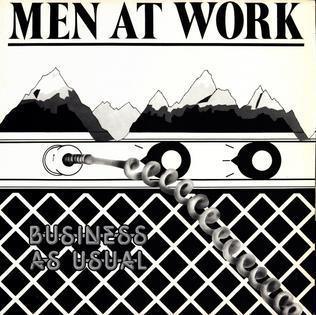 This is a slightly unusual inclusion, given that it heralds the introduction of Australia’s ’80s pop sound, and is in contrast to all the 1970s artists I’ve rambled about in the intro. But I must have sat and listened to this record hundreds of times, over and over and over again, as a child. Funnily enough, I almost always skipped the monster hit ‘Down Under’ and listened repetitively to the breathtaking love song ‘I Can See It In Your Eyes’ and uber-catchy album tracks ‘Underground’ and ‘Helpless Automation’. The warmth of Hay’s voice mixed with the genre-bending pop hooks and shiny ’80s instrumentation meant that I quickly became addicted to Business As Usual.
This is a slightly unusual inclusion, given that it heralds the introduction of Australia’s ’80s pop sound, and is in contrast to all the 1970s artists I’ve rambled about in the intro. But I must have sat and listened to this record hundreds of times, over and over and over again, as a child. Funnily enough, I almost always skipped the monster hit ‘Down Under’ and listened repetitively to the breathtaking love song ‘I Can See It In Your Eyes’ and uber-catchy album tracks ‘Underground’ and ‘Helpless Automation’. The warmth of Hay’s voice mixed with the genre-bending pop hooks and shiny ’80s instrumentation meant that I quickly became addicted to Business As Usual.
Note: Dad has the original release with the white cover, not the yellowed cover that seemed to be plentiful soon after.
09. BILLY JOEL
Glass Houses
Released: March 10, 1980
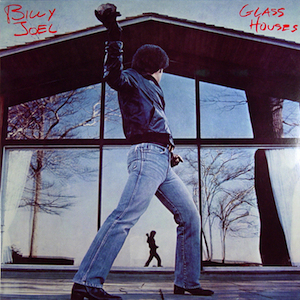 This is one of the most flawless rock records ever made. And whenever I hear a song from it I immediately remember why I became so obsessed with it as a seven-year-old. Perhaps the most well-known track is ‘It’s Still Rock and Roll To Me’, which was Joel’s cheeky meditation on the progression of popular music and how it would never hold up to the old rock ‘n’ roll. Interestingly though, Joel embraces heavy synthesiser flourishes on two of the record’s best tracks – ‘Sometimes A Fantasy’ and ‘All For Leyna’. The first track I heard on the vinyl was ‘Sleeping With The Television On’. My father put a giant pair of headphones on my head and said, “You have to listen to this song, son. It’s brilliant. Pay close attention to Liberty DeVitto’s drumming. It’s huge.” To this day, that particular track probably stands as Joel’s finest. And that’s saying a lot. Of course, Glass Houses also features two stunning love songs – Joel writes the best ballads in the business – in the shape of ‘C’était Toi (You Were the One)’ and the moving closer ‘Through The Long Night’. It’s just a perfect album.
This is one of the most flawless rock records ever made. And whenever I hear a song from it I immediately remember why I became so obsessed with it as a seven-year-old. Perhaps the most well-known track is ‘It’s Still Rock and Roll To Me’, which was Joel’s cheeky meditation on the progression of popular music and how it would never hold up to the old rock ‘n’ roll. Interestingly though, Joel embraces heavy synthesiser flourishes on two of the record’s best tracks – ‘Sometimes A Fantasy’ and ‘All For Leyna’. The first track I heard on the vinyl was ‘Sleeping With The Television On’. My father put a giant pair of headphones on my head and said, “You have to listen to this song, son. It’s brilliant. Pay close attention to Liberty DeVitto’s drumming. It’s huge.” To this day, that particular track probably stands as Joel’s finest. And that’s saying a lot. Of course, Glass Houses also features two stunning love songs – Joel writes the best ballads in the business – in the shape of ‘C’était Toi (You Were the One)’ and the moving closer ‘Through The Long Night’. It’s just a perfect album.
08. BLACK SABBATH
Black Sabbath
Released: Friday the 13th, February, 1970
 I was listening to late night rock radio as a six-year-old, keen to be exposed to other ’70s rock bands. I heard Black Sabbath’s cover of the Crow track ‘Evil Woman’ (Sabbath’s version is a lot more evil than Crow’s – the original sounds a bit like Elvis Presley at a Halloween party). I asked my dad about it and, as it turned out, he happened to have the original Vertigo pressing of Black Sabbath in the collection. So I put on the giant headphones and sat by the vinyl player, gazing at the cover art of that creepy witch motionless in the garden (the image was taken next to Mapledurham Watermill, by the River Thames in Oxfordshire) and listened to the terrifying intro of the eponymous opening track. In a darkly poetic way I shared the experience of every other person who heard Black Sabbath on its initial release – the birth of a new genre called heavy metal. I recognised the blues influence in other ’70s bands I had listened to. But this was more. There was a bestial groove in the bass and guitar, and undeniably sinister charm in Osbourne’s vocals. ‘N.I.B.’ remains the highlight. I had never heard anything as heavy in my life. That slinking wah-wah intro from bassist Geezer Butler is like a hobgoblin twirling at the bottom of the garden and the thundering riffs from Tony Iommi are all dark storm clouds and gloom. There’s really no praise you can place on this mighty album that is not already contained within the towering mountain of reverence.
I was listening to late night rock radio as a six-year-old, keen to be exposed to other ’70s rock bands. I heard Black Sabbath’s cover of the Crow track ‘Evil Woman’ (Sabbath’s version is a lot more evil than Crow’s – the original sounds a bit like Elvis Presley at a Halloween party). I asked my dad about it and, as it turned out, he happened to have the original Vertigo pressing of Black Sabbath in the collection. So I put on the giant headphones and sat by the vinyl player, gazing at the cover art of that creepy witch motionless in the garden (the image was taken next to Mapledurham Watermill, by the River Thames in Oxfordshire) and listened to the terrifying intro of the eponymous opening track. In a darkly poetic way I shared the experience of every other person who heard Black Sabbath on its initial release – the birth of a new genre called heavy metal. I recognised the blues influence in other ’70s bands I had listened to. But this was more. There was a bestial groove in the bass and guitar, and undeniably sinister charm in Osbourne’s vocals. ‘N.I.B.’ remains the highlight. I had never heard anything as heavy in my life. That slinking wah-wah intro from bassist Geezer Butler is like a hobgoblin twirling at the bottom of the garden and the thundering riffs from Tony Iommi are all dark storm clouds and gloom. There’s really no praise you can place on this mighty album that is not already contained within the towering mountain of reverence.
07. FOCUS
At The Rainbow
Released: October 1973
 There’s never been a band like Focus – not before or since. Nothing has ever blown my mind like hearing these Dutch prog geniuses for the first time. You need only hear the spell-binding version of ‘Hocus Pocus’ from this immaculately recorded live album at London’s Rainbow Theatre to get an idea of how my tiny five-year-old brain might have struggled to process what these guys were doing. Thijs van Leer’s operatic vocal range comes to the fore when he yodels on ‘Hocus Pocus’, as does his aggressive flute. I had never heard anything like it. And master guitarist Jan Akkerman’s guitar work shifts effortlessly between mind-bending, schizophrenic solos and stunning, tear-jerking sustained notes. He can make the guitar cry. I also really loved the Akkerman guitar piece ‘Sylvia’. It’s beauty is up there with Santana’s ‘Samba Pa Ti’.
There’s never been a band like Focus – not before or since. Nothing has ever blown my mind like hearing these Dutch prog geniuses for the first time. You need only hear the spell-binding version of ‘Hocus Pocus’ from this immaculately recorded live album at London’s Rainbow Theatre to get an idea of how my tiny five-year-old brain might have struggled to process what these guys were doing. Thijs van Leer’s operatic vocal range comes to the fore when he yodels on ‘Hocus Pocus’, as does his aggressive flute. I had never heard anything like it. And master guitarist Jan Akkerman’s guitar work shifts effortlessly between mind-bending, schizophrenic solos and stunning, tear-jerking sustained notes. He can make the guitar cry. I also really loved the Akkerman guitar piece ‘Sylvia’. It’s beauty is up there with Santana’s ‘Samba Pa Ti’.
Another bit of trivia: By the time At The Rainbow was released in October 1973, drummer Pierre van der Linden had left the group, having had pressure placed on him to change his jazzy style to a more mainstream approach. He has since rejoined the modern line-up of Focus which has van Leer as its driving force. At The Rainbow is one of the best live rock records in the history of music.
Note: Dad has the really cool original gatefold sleeve, which opens up into some great artwork. And, a few years ago, I managed to find the same version of the release at a vinyl fair. Score.
06. DEEP PURPLE
Made In Japan
Released: December 1972
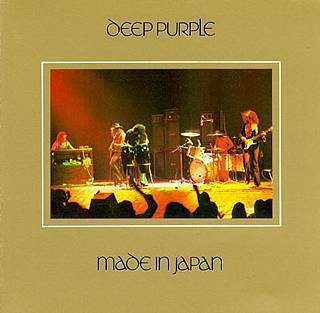 As the name subtly suggests, this legendary live album was recorded over three nights in Japan – in both Osaka and Tokyo. And while Deep Purple continue to this day and remain a really impressive live band, Made In Japan documents the most potent line-up of the group. While they’ve had a rotation of vocalists throughout their career, Gillan is the original and the best Deep Purple singer (and of course continues in the band to this day). His performance on the second track, the epic ‘Child In Time’, is surely one of the best vocal performances in classic rock history. But he was supported by one of the best bands in the world at the time, one capable of beauty and aggression. From Ritchie Blackmore’s blitzkrieg solos, to Jon Lord’s wall of organ, Roger Glover’s rhythmic bass spine and Ian Paice’s relentless drumming (he’s up there with Bonham), Deep Purple were a force of nature.
As the name subtly suggests, this legendary live album was recorded over three nights in Japan – in both Osaka and Tokyo. And while Deep Purple continue to this day and remain a really impressive live band, Made In Japan documents the most potent line-up of the group. While they’ve had a rotation of vocalists throughout their career, Gillan is the original and the best Deep Purple singer (and of course continues in the band to this day). His performance on the second track, the epic ‘Child In Time’, is surely one of the best vocal performances in classic rock history. But he was supported by one of the best bands in the world at the time, one capable of beauty and aggression. From Ritchie Blackmore’s blitzkrieg solos, to Jon Lord’s wall of organ, Roger Glover’s rhythmic bass spine and Ian Paice’s relentless drumming (he’s up there with Bonham), Deep Purple were a force of nature.
While I believe in personal freedom, I would throw my support behind a law that made it mandatory for all six-year-old kids to have to wear a voluminous pair of vintage headphones and listen to this live version of ‘Child In Time’ on vinyl. If you haven’t heard it, then you don’t know rock music.
Oh, and the recording of ‘Smoke On The Water’ is huge.
05. THE OUTLAWS
Bring It Back Alive
Released: February 1978
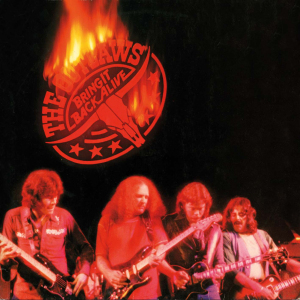 A lot of people say Live and Dangerous is the greatest live record of all time, but they’re wrong. It’s actually The Outlaws’ Bring It Back Alive. This monstrous double LP opened my mind to southern rock. My dad was a hardcore fan of the genre, and he had acquired vinyl by all the masters: The Marshall Tucker Band, Poco, The Eagles, Firefall, Loggins and Messina, The Doobie Brothers, Amazing Rhythm Aces, Pure Prairie League, The Ozark Mountain Daredevils, Creedence Clearwater Revival, The Stills-Young Band and The Flying Burrito Brothers (to name just a few).
A lot of people say Live and Dangerous is the greatest live record of all time, but they’re wrong. It’s actually The Outlaws’ Bring It Back Alive. This monstrous double LP opened my mind to southern rock. My dad was a hardcore fan of the genre, and he had acquired vinyl by all the masters: The Marshall Tucker Band, Poco, The Eagles, Firefall, Loggins and Messina, The Doobie Brothers, Amazing Rhythm Aces, Pure Prairie League, The Ozark Mountain Daredevils, Creedence Clearwater Revival, The Stills-Young Band and The Flying Burrito Brothers (to name just a few).
But of all those bands, I really latched on to The Outlaws. I loved prog music as a kid and I think the Tampa, Florida, six-piece juggernaut treated their music with the same sensibility. They loved a long jam. Bring It Back Alive captures this penchant for extended live versions of their album tracks, culminating in the greatest live recording of all time – the 21-minute cut of ‘Green Grass and High Tides’. They also placed importance on multiple harmonies, adding colour and texture to their catchy country rock classics. There’s noticeable jazz, funk and blues influences too.
Bring It Back Alive captures the soaring talent of Outlaws vocalist and guitar virtuoso Hughie Thomasson, who sadly checked out in 2007 at the young age of 55. Also in this showcase is fellow axe master Bill Jones, who took his own life in 1995, and the phenomenal drummer and percussionist Monte Yoho, who remains in The Outlaws to this day.
The haunting, slow-burning ‘Prisoner’ sounds like it could have been sewn during the British prog explosion and is in stark contrast to the desert ghost story ‘Hurry Sundown’ which has one of the most scintillating guitar riffs ever released in southern rock.
A moving moment from this live recording is the dedication of ‘Green Grass’ to Lynyrd Skynyrd, with whom The Outlaws had a close association (Thomasson would go on to join Lynyrd) and whose plane crashed during the months that Bring It Back Alive was being recorded at various live performances. I still get a little chill whenever I hear that solemn dedication.
04. LED ZEPPELIN
IV
Released: November 8, 1971
 There’s not a great deal I can say about Led Zeppelin’s landmark untitled fourth record that has not been said all ready. No superlative really captures the spiritual experience of listening to this record. And no words can do justice to that transformative moment when you sit in your darkened living room, place a giant pair of vintage headphones on your head and listen to ‘Stairway To Heaven’ for the first time. Of all the moments from my childhood, listening to ‘Stairway’ that very first time is one I recall with some clarity.
There’s not a great deal I can say about Led Zeppelin’s landmark untitled fourth record that has not been said all ready. No superlative really captures the spiritual experience of listening to this record. And no words can do justice to that transformative moment when you sit in your darkened living room, place a giant pair of vintage headphones on your head and listen to ‘Stairway To Heaven’ for the first time. Of all the moments from my childhood, listening to ‘Stairway’ that very first time is one I recall with some clarity.
With the benefit of hindsight I now look at the mystic artwork of the officially untitled IV as a stroke of marketing genius. Music critics, reluctant to admit that Led Zeppelin deserved the mainstream adoration they had stolen from The Beatles, called the band a hyped fad. They didn’t accept them. So what do Zeppelin do? Release an abstract and decidedly confusing album cover with no mention of the band or the record’s name. It was ground-breaking and it quickly silenced a lot of entertainment journo hacks.
I reference the experience of listening to Led Zeppelin IV for the first time in my novel, Enormity. This is an excerpt from a scene in which the protagonist, Jack, is performing ‘Black Dog’ to an auditorium of fans: “My mind briefly concentrates on the lyrics of ‘Black Dog’, a song I listened to as an eight-year-old on my father’s record player. Headphones that were too big for me. I often wish that I could go back and listen to Led Zeppelin IV for the first time. Even when placed next to all the amazing music that humans have produced, it’s in a universe of its own. Melodic nirvana. ‘The Battle Of Evermore’, with its penetrating harmonies, pastoral imagery and parochial sensibility. I lie awake at night and hear it over and over again. Echoes of a world lost.”
Speaking of nirvana, I experienced that exquisite stillness of mind a few years ago when Robert Plant toured Australia. I went to two of his gigs. In his set was the classic ‘Going To California’ – a faithful, note-perfect rendition. Breathtaking.
03. MOUNTAIN
And The Road Goes Ever On
Released: April 1972
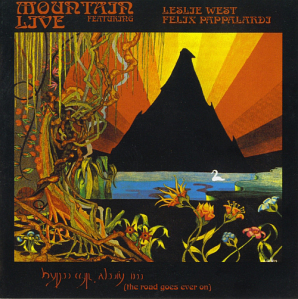 Takings its title from The Hobbit, this four-track live record from New York hard rock pioneers Mountain was one I dived into on innumerable occasions. The main reason for my return visits was its 17-plus-minute rendition of their classic ‘Nantucket Sleighride’. To this day, it remains one of the most astoundingly beautiful rock jams you will ever hear. This version is a sublime sonic excursion. It picks you up and forces you to drift on its tide. The peaks and troughs are expertly crafted and ultimately very haunting. Lyrics like: “There are years behind us reaching to the place where hearts are beating, and I know you’re the last true love I’ll ever meet,” still give me goosebumps whenever I hear them.
Takings its title from The Hobbit, this four-track live record from New York hard rock pioneers Mountain was one I dived into on innumerable occasions. The main reason for my return visits was its 17-plus-minute rendition of their classic ‘Nantucket Sleighride’. To this day, it remains one of the most astoundingly beautiful rock jams you will ever hear. This version is a sublime sonic excursion. It picks you up and forces you to drift on its tide. The peaks and troughs are expertly crafted and ultimately very haunting. Lyrics like: “There are years behind us reaching to the place where hearts are beating, and I know you’re the last true love I’ll ever meet,” still give me goosebumps whenever I hear them.
The first two tracks from And The Road Goes Ever On, the frequently hip hop sampled ‘Long Red’ and ‘Waiting To Take You Away’, were recorded live at a little-known music gathering called Woodstock in 1969. But the second two tracks, ‘Crossroader’ and ‘Nantucket Sleighride’, were, I believe, from Mountain’s own headline shows.
The line-up on stage during ‘Nantucket’ is one of the best you will hear. Guitarist and vocalist Leslie West was (and is still) a monstrous axeman. Then behind him was one of the greatest bass players of all time, Felix Pappalardi. The great man, who produced Cream’s Disraeli Gears and was often referred to as the fourth member of that band, was shot and killed by his wife, Gail, on April 17, 1983, in their East Side Manhattan apartment. Rock music lost one of its unsung superstars on that day. Incidentally, Gail, an artist, created the cover for And The Road Goes Ever On, casting a grim and ironic shadow over the record and its title.
On a positive note, there’s no way you can discuss this particular vinyl without mentioning the mesmerising drum work of long-time Mountain drummer Corky Laing. All aspiring drummers should sit and study this master class in dynamic percussion.
02. ELECTRIC LIGHT ORCHESTRA
A New World Record
Released: September 11, 1976
 I discovered Electric Light Orchestra while watching a cinematic moment in which Steve Buscemi cradles a hunting rifle and applies women’s lipstick to his sensual pout. The movie was Billy Madison. The song was ‘Telephone Line’. Something about those digital-esque synth sounds, the replication of a dialling tone, intrigued me. When I found out the song was performed by ELO, I quickly looked in my parents’ vinyl collection to see if they owned the album. They did.
I discovered Electric Light Orchestra while watching a cinematic moment in which Steve Buscemi cradles a hunting rifle and applies women’s lipstick to his sensual pout. The movie was Billy Madison. The song was ‘Telephone Line’. Something about those digital-esque synth sounds, the replication of a dialling tone, intrigued me. When I found out the song was performed by ELO, I quickly looked in my parents’ vinyl collection to see if they owned the album. They did.
A New World Record was a commercial triumph for Jeff Lynne, who was also the most talented member of The Travelling Wilburys, and his high-concept orchestral rock group Electric Light Orchestra. It’s hard to believe that the preceding two records, the masterpiece Eldorado and the follow-up Face The Music, did not even chart in their UK home. But A New World Record, deliberately written by Lynne to be more accessible than their previous albums, exploded worldwide, reaching #6 in the UK, #5 in the USA and topping the charts in Australia and Sweden. Propelled by hit single ‘Livin’ Thing’ the album exposed the monstrous genius of Lynne to a worldwide audience.
What continues to astound me about this album is not just how faultless it is, perfectly fusing Lynne’s penchant and vision for irresistible melody, sonic innovation and classic music, but just how fresh and completely original it sounds in 2014. From the ballsy and polished reworking of 1972’s ‘Do Ya’, a song written by Lynne and recorded by The Move during his time in the band, to the heart-wrenching crescendo of ‘Shangri La’, A New World Record is as the name suggests – a new creative height that is near impossible to surpass.
01. WISHBONE ASH
Argus
Released: April 28, 1972
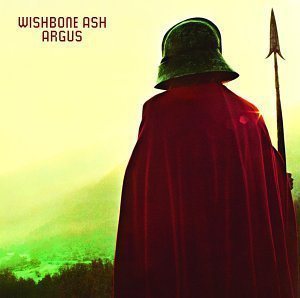 While Black Sabbath can be credited for inventing heavy metal music, Wishbone Ash’s pioneering twin-lead guitar prog-rock was certainly a large influence on Ozzy and his mates. Argus, the group’s third record, is a masterpiece. It features the original and most powerful line-up of the group which, in modern times, has rotated more often than a pig on a rotisserie. The Mark I roster consisted of stunning guitarists Ted Turner and Andy Powell, vocalist, bassist and songwriter Martin Turner and drummer Steve Upton.
While Black Sabbath can be credited for inventing heavy metal music, Wishbone Ash’s pioneering twin-lead guitar prog-rock was certainly a large influence on Ozzy and his mates. Argus, the group’s third record, is a masterpiece. It features the original and most powerful line-up of the group which, in modern times, has rotated more often than a pig on a rotisserie. The Mark I roster consisted of stunning guitarists Ted Turner and Andy Powell, vocalist, bassist and songwriter Martin Turner and drummer Steve Upton.
Argus opens with an America-like track – ‘Time Was’ is a meandering and parochial folk number that turns into an epic and gorgeous rock song. From there the breathtaking guitar-work continues into the dreamy ‘Sometime World’. The most powerful song is perhaps ‘Warrior’, a lyrically simple story about lowly farmers picking up arms to fight a common enemy. In its chorus you can hear the genesis of the heavy metal genre.
I suppose what stays with me the most is the sublime melodies of Argus, more so than the brilliant Hipgnosis-designed cover. The British medieval themes make the album such an expansive and evocative experience, but ultimately the flawless guitar solos make this essential listening for anyone who has ever lifted the axe, put their back into it and gone for a full swing.

November 14, 2014
Hugh Cornwell: interview
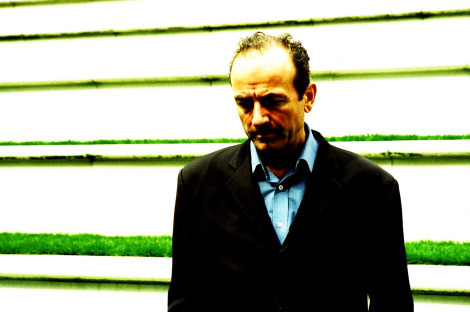
Hugh Cornwell
The Stranglers never really fitted in anywhere. They were too polished to be properly accepted by the punk movement. They were too punk to be embraced by the mainstream. But three decades on and their genius is now commonly accepted.
Songs like ‘Golden Brown’, ‘Peaches’ and ‘Strange Little Girl’ are virtually British national anthems. From The Stranglers’ inception to his departure in 1990, singer and songwriter Hugh Cornwell was the driving creative force behind the group.
Since embarking on his solo career, Cornwell has continued to release music and perform around the world. At the suggestion of the two Australians running the record label, Toerag, on which Cornwell released his latest record Hooverdam as a free download, the London-native and avid cricket fan began performing The Stranglers’ debut record, Rattus Norvegicus, in its entirety.
“The fans loved it. They’d never actually seen the album played from top to tail in order. The Stranglers never did it because we would perform our songs all mixed up. People [bands] are going out and playing famous albums now and I’ve got to say, I really enjoy playing [Rattus],” Cornwell says.
After 34 years since its release, Cornwell believes Rattus Norvegicus has remained fresh and relevant. “It just shows you what an amazing collection of songs it was. It’s a great body of work. I know Stranglers fans would beg to disagree with me, but for me it’s the stand out album. It’s so strong,” Cornwell says.
 There’s no great story behind the naming of the record, even though the epic closing track is called ‘Down In The Sewer’. “We didn’t want to name the album after a song, so we decided to be perverse – ‘obtuse’, I believe is the word – and pick the Latin name that represents the common rat, which is prevelant in the UK. We just thought it would be weird,” Cornwell explains.
There’s no great story behind the naming of the record, even though the epic closing track is called ‘Down In The Sewer’. “We didn’t want to name the album after a song, so we decided to be perverse – ‘obtuse’, I believe is the word – and pick the Latin name that represents the common rat, which is prevelant in the UK. We just thought it would be weird,” Cornwell explains.
The Stranglers’ music in the late 70s was sexually charged and often roused the ire of feminist groups. Their hit ‘Peaches’ was seen as glorifying the objectification of women, although it was actually Cornwell’s sardonic exploration of male behaviour.
The song doesn’t offend as many people in 2011. “People are more tolerant now. You can get away with murder now. In those days you couldn’t get away with a lot of stuff. They had very conservative views. But it takes people who push the boundaries to make people more tolerant. One of the worst things in life is intolerance,” Cornwell muses.
When he appeared in Australia in 2011 he played in a trio, which has been his arrangement for many years. “It’s just bass, guitar and drums -– I love playing in that format,” Cornwell says. “I just so happened to have been lucky enough to secure the services of the same drum and bass player that played on my first proper solo album after I left The Stranglers, called Guilty. We worked out last Autumn that I’ve been playing with Chris and Steve on and off, longer than I played with the original members of The Stranglers. I was in The Stranglers for 17 years – I’ve been playing with these guys on and off for 19 years.”
While a broad, droning keyboard sound became an integral aspect of The Stranglers’ sound, Cornwell explains that his trio revive the band’s earliest sound. “We’re doing new arrangements of these old songs,” he says. “What a lot of people don’t realise that in the early days of The Stranglers we spent a lot of time as a trio. wasn’t a very good guitar player then; I was more of a rhythm player. I didn’t do solos. So a lot of those songs on Rattus started off as trio songs. The keyboards were put on the top. [The songs] lend themselves perfectly to being performed by a three-piece.”
Cornwell attributed his prolific creative output after The Strangers to his low attention span. He needs to keep busy. “I’m constantly doing stuff. I hate sitting around doing nothing. Five years ago I broke up with a long-term girlfriend and I wanted to go on holidays. But I knew I would get bored by myself so I started writing a novel. It’s coming out this May.”
It won’t be the first book Cornwell has released. In 2004, Cornwell’s autobiograhy was published, titled A Multitude Of Sins. The book is a compelling read, covering his childhood, his time as a post-graduate biochemistry researcher in Sweden, his friendship with a charming bank robber, the rise of The Stranglers and his brief stint in Pentonville prison for being busted at a police road block with a cornucopia of drugs that been given to him by fans.
“Now when I’m on holiday I’m always writing, so I never really stop working,” Cornwell chuckles. “To me, writing is like a holiday. A change is as good a rest. Writing fiction is like another world. You’re still using your mind and creating, but you’re entertaining yourself. The problem is that I can’t read books now. I’d rather write one than read one.”
Cornwell explains that his soon-to-be-released book, Window On The World, is a thriller romance set in London, with the story shifting to numerous locations. “I like the dark side. I like tragic comedy, because life is a tragic comedy. “Some of the things that happen to people, you just couldn’t make up,” he says.
When held up against Cornwell’s remarkable and eventful life, never has a truer observation been made.


October 19, 2014
Bobby Gillespie: interview
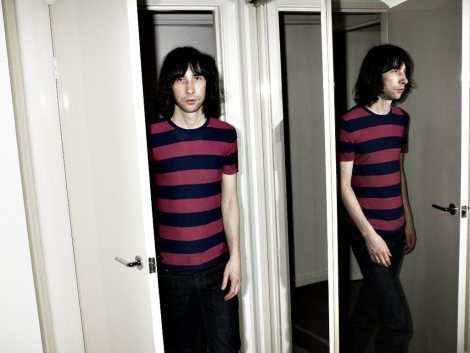
PRIMAL INSTINCTS: Bobby Gillespie of Primal Scream learned a lot from his time in Jesus and Mary Chain.
My 2008 interview with Primal Scream frontman and former Jesus and Mary Chain drummer Bobby Gillespie was a real treat. I had been given a 20-minute window to speak with the rock star about his band’s impressive album Beautiful Future , but Gillespie enjoyed our chat so much that he suggested we continue talking. We spoke for about 40 minutes or so and I was very impressed by him. This is the resulting article that ran as a feature in Reverb Magazine while I was editor. Enjoy. – Nick Milligan
Nine studio albums into their career, Primal Scream show no signs of slowing down. While their peers of the early 80s have either disappeared or stayed set in their ways, this Scottish institution, led by vocalist Bobby Gillespie, are ever-evolving – and their eyes are open to the future.
It’s appropriate then, that this new release, Beautiful Future, steer clear of sounds from the past. Out of numerous contenders, the band worked with producer Bjorn Yttling (of Swedish pop-trio Peter Bjorn and John) and collaborated with people like Josh Homme and CSS’s Lovefoxx.
“We wrote a bunch of good songs, then we felt that they leant themselves to a big, expansive-sounding, and clear production. We wanted there to be clarity and space,” says Gillespie. “We wanted the voice up front [in the mix] and the drums really loud and up the front too.”
Beautiful Future marks the continued emergence of Yttling as a sought after producer, who has also worked with artists such as Lykke Li, Montys Loco and Shout Out Louds. His love of fresh, and often stark pop music, is becoming attractive to many bands.
“I think we’re really good at what we do. We’re a f**king great rock’n’roll band.”
“We met Bjorn and we liked him as a guy. He’s got a dry sense of humour and he’s funny. His musical tastes are completely similar to ours – he’s a music lover. Bjorn’s ideas for production were really good – he wanted clarity and space. He’s very minimalist and that suited us right down to the ground,” explains Gillespie.
Primal Scream continue to be fans of new music, and although their sound isn’t influenced by a lot these days, Gillespie admits that some of the new crop of emerging artists give Primal Scream inspiration.
“I think we’re influenced by their energy, rather than the music. Last year you had CSS and the Klaxons – cool, energetic pop bands. They’re good people and brilliant at music. That’s inspiring and you get that energy back from them. I get a lot of joy from seeing these bands and hearing their records. It can also make you want to work with their producers. We nearly worked with James Ford who produces The Klaxons – and he was a cool guy – but our schedules clashed. We also worked with Paul Epworth, who has produced a lot of young bands. We liked his energy and his youthfulness. That’s why we worked with Bjorn Yttling. Enthusiasm and energy are fucking great.”
Does Gillespie think Beautiful Future will surprise some fans? “I don’t really care, to be honest with you,” says Gillespie, with his innate sense of honesty. “I don’t listen to what other people say about our music. If a band is trying to make a specific type of record for their audience, then that’s pretty f**ked. We just like to do what we do.”
Beautiful Future weaves Gillespie’s darker lyrical style with uplifting melodies – which is just the way he likes it. “I think [the record] is quite euphoric. Even if some of the lyrics aren’t exactly joyous, it’s a good mixture to have euphoric music with cutting lyrics. [The songs] are just observations and how I see things. A lot of my humour is in there, as well as sarcasm. I really love euphoric music, like the early Beatles, The Archies, or glam-rock – like Gary Glitter. It gives you such a f**kin’ rush. I think Primal Scream have always had euphoria in our music, like ‘Rocks’ and ‘Country Girl’. We write those kinds of songs. Euphoria is great – it’s joyous. It’s great to make people happy,” explains Gillespie.
One of the darker mixtures on the album is the single ‘Can’t Go Back’, which tells the story of a man who is desperately trying to avoid slipping into old habits. “That song is a psychotic story – it’s not personal. I’m sure there’s little bits of my life in there, but I try to keep a distance from my lyrics. I’m a songwriter, so I write stories,” says Gillespie. “I’ve always written that way. Parts of your life creep into the songs, but as a writer you observe other people and how they act.”
“We knew the record should start with ‘Beautiful Future’,” Gillespie continues. “It sounded like an album opener. As soon as you hear that song, you’re drawn into the world of the album. Some songs can’t follow other songs, because it might be too much of a dramatic change in mood. We try to match the mood of each song, like a DJ would. Although a DJ matches beats per minute, for us it’s a different thing – we’re trying to make the album like a journey. You’ve hopefully been taken somewhere strange, new and exciting.”
“If you sequence your album wrong,” continues Gillespie, “it can really f**k it up for the listener and people won’t want to listen to it again. Like a film, the scenes have to be in the right order for the story to be told properly.”
As Gillespie confirms, Beautiful Future was chosen as the title of the album because it is loaded with meaning and open to interpretation. It can be viewed as positive or sarcastic. “It was the perfect title for the album, really. The lyrics of the title track set the tone for the rest of the album,” says Gillespie.
So what would the singer have thought of this new album if someone had played it to him when Primal Scream where starting out? “I’m sure I would have liked it. It touches on some of the music I was listening to [when the band formed], but also some of the stuff I was listening to when I was 11 or 12 – even 9. There’s some bubblegum [pop] on this album,” admits Gillespie.
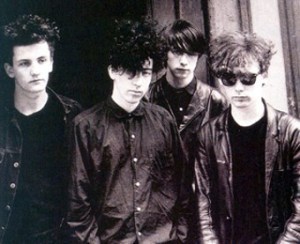
Jesus and Mary Chain circa 1985, with Gillespie pictured second from right.
OFF THE CHAIN
While forming Primal Scream in his own time, Gillespie gained recognition as the drummer for seminal Scottish group The Jesus And Mary Chain. He left the band in 1986, not long after performing on their classic record Psychocandy. “I learned so much from being around Jim and William Reid (Jesus And Mary Chain co-founders). I can’t even begin to tell you… they continue to influence me – their aesthetic, their approach to rock’n’roll and making records, performing on stage, videos, artworks – the whole thing. Their original bassist Douglas Hart, who is one of my best friends and was the best man at my wedding, said that Jim and William were his ‘cultural revolution’. I think that’s pretty amazing. Douglas was 18, I was 21 (when we started in the band). Jim was 20 and William was about 25. William was fully formed in his ideas about how far he could take rock’n’roll. Jim and William had a vision for their sound – mixing beautiful, summery pop songs with violent, chainsaw feedback and psychotic guitars.”
The most important contribution that the Reid brothers made to Gillespie’s career, was their encouragement of him to pursue his own unique approach to lyricism. Although they allegedly told Gillespie to make a choice between Primal Scream or Jesus and Mary Chain, their feedback was always supportive. “Jim and William encouraged me to use the language I [now] use in my lyrics. William read some poems and letters to my girlfriend I had written, which were quite different to the lyrics I had been writing. The poems were more fractured, and eventually more violent and sexual. William said, ‘Bob, these are great words. You should be writing lyrics like this.’ I think I was being too traditional in my lyrics. Jim and William were also two of the first people to say, ‘Bob, you’re a fucking good songwriter.’ That meant a lot because I really looked up to them. I could spend five hours telling you how much they have influenced me,” chuckles Gillespie. “Their influence is endless and I love them.”
When asked if he is proud that he performed drums on Psychocandy, Gillespie is almost speechless. “Oh, man,” says Gillespie. “If I only ever did one thing in my life and it was that… it’s just a great album.”
A BEAUTIFUL PAST
Primal Scream have been releasing albums for over 20 years, while a lot of their peers have come and gone. Why have Primal Scream lasted? Gillespie delivers with trademark honesty. “I think we’re really good at what we do. We’re a f**king great rock’n’roll band. We love music and we’ve given ourselves completely to music. If you give yourself to music, it will give you something back. [Primal Scream] have always been about making great records and being great live. When I went on tour in the beginning with Mary Chain, I knew I wanted to do this for the rest of my life. I was born to do this,” says Gillespie.
He met fellow Primal Scream guitarist Andrew Innes when they were both in school. Their shared love of playing music made them destined to form a band. “[Andrew Innes] could play every punk song and I would be amazed. I’d think, ‘How the fuck can this school boy play the Pistols, The Clash and The Jam?’ I think I was 17 and he was 16. He was born to be in a band. But [Primal Scream] always want to get better – we want every album to better than the last,” says Gillespie. “There were lots of bands that started at the same time as us, and even then I thought, ‘We’ve got it. They ain’t got it.’ It sounds arrogant, but it’s not arrogant. I look at other bands and I know they ain’t rock stars and they ain’t good musicians. We knew we were good. Do you know what AC/DC song, ‘It’s A Long Way To The Top If You Want To Rock and Roll’? I love that song because Primal Scream went out there and played and played and played. I respect anyone who does that.”
With this Scotish lad’s enthusiasm about the future, one can only assume that at the top Primal Scream will remain.
Beautiful Future is available now through Warner.


October 9, 2014
10 Aussie songs from 2014 you need to hear
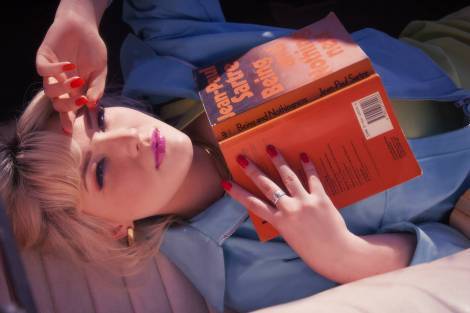
Holiday Sidewinder
I’ve been trying to keep up with the best music releases in 2014 and, I’ve got to say, it’s been really difficult. There’s dozens of records released every week that are worth listening through. So far this has been a spectacular year for Australian music – and New Zealand music too, for that matter. So in the interests of patriotism and achieving my goal as a music journalist, which is to be a conduit between amazing music and hungry listeners, here are 10 Australian tracks released this year that you really need to hear.
I’ve included a Spotify playlist, but I encourage you to download these 10 tracks from iTunes.
01. WAGONS
‘Chase The Eclipse’
A swampy, boogie blues-rock track straight out of the ’70s, this song is a stand-out on Wagons’ epic new release Acid Rain and Sugar Cane. The break-down jam is really delish. I recommend listening to the whole record, it’s arguably the best Aussie release of the year so far. Admittedly, I’m a bit late to the table with the work of Henry Wagons, but I’m now going through the back catalogue and righting this wrong. Wagons is clearly a guru.
02. HOLY HOLY
‘House of Cards’
Holy Holy released their The Pacific EP this year and I’m really digging their sound. They create moody and mature rock, that echoes of a band I really loved – Youth Group. There’s a real complexity to their songwriting and an engaging atmosphere. Their ‘History’ single is good, but a little too ’90s anthemic Brit rock. I reckon ‘House of Cards’ is more original and really where it’s at. Check it out.
03. STEVE SMYTH
‘South Land’
Well I’ve really raved about Smyth this year to absolutely anyone who will listen. His second album release, Exits, is a modern masterpiece which I’ll no doubt be listening to until the end of my days. ‘South Land’ really soars, as Smyth reflects on his time spent on the Southern coast of Australia. It’s also a showcase for both the raw power and fragility of his voice.
04. HUSKY
‘I’m Not Coming Back’
I first heard this song live at the Dungog Festival. There’s no mistaking the ’60s pastoral folk influences in Husky’s music, but these lads deliver it with sublime harmonies and melodies. I think this is a modern classic. I’m looking forward to hearing its home record, the upcoming Ruckers Hill. Admittedly, I thought it would be hard for Husky to pen a track more haunting than ‘History’s Door’ – but here it is.
05. DAVEY LANE
‘Komarov’
Lane is one of Australia’s rock superstars. A supremely talented individual whose varied tastes seem to be ultimately inspired by the British guitar gods like Brian May and Pete Townshend. He’s released some huge songs with past group The Pictures, but his solo work is aiming really high. And it delivers. ‘Komarov’ is fuzzy, psychedelic stadium rock with colossal riffs and oddball production. Brilliant.
06. BERTIE BLACKMAN
‘War of One’
Always evolving, Blackman is a giant talent. Her new record, The Dash, is a shimmering, electro pop fantasy that packs a lot of punch in just over half an hour. This single, ‘War of One’, is big, dense and mesmerising. And there’s a political message there too. This will surely be a summertime anthem.

De’May
07. DE’MAY
‘Red Wine Fever’
It’s really hard to pick a fave tune from Demi Mitchell’s captivating record If We Don’t Leave Now, but there’s something particularly hypnotic about the lulling guitar and piano of ‘Red Wine Fever’. The lyric “I’ve been dancing with the Devil with two left feet” seems to perfectly distill the restless introspection and evocative lyrics of De’May’s debut album.
08. KIM CHURCHILL
‘Don’t Leave Your Life Too Long’
Much like his friend Steve Smyth, Kim Chuchill is a global traveller, but not a world-weary one. You could call his latest record, Silence/Win, a breakthrough, as it has introduced the guitar virtuoso to an international audience. What Churchill manages to do on his latest album is defy categorisation, sewing together surf folk, rock, pop and a host of genres in between, to create a seamless collection of songs that are wholly optimistic and uplifting.
09. LANIE LANE
‘Celeste’
When I interviewed Lane for her record To The Horses, which sonically drew on the work of icons like Nancy Sinatra and Dusty Springfield – and caught the ear of Jack White – the chanteuse assured me that her follow-up album was going to be different. It was going to be darker. I didn’t know what to expect, but it certainly wasn’t the incredible Night Shade. The first single, ‘Celeste’, is unlike anything else you will hear this year and it’s the jewel in a beguiling crown of a record.
10. HOLIDAY SIDEWINDER
‘Born On The Wind’
Holiday Sidewinder has been travelling around the world, recording the sexiest pop you’ll hear this year. Anyone that saw Sidewinder front the dark folk rock band Bridezilla, is already well aware of her sultry and alluring stage presence. Now we’re hearing that potent sexuality fused with a dance-pop soundtrack, a side of her musical tastes that was exposed on her Pnau collaboration, ‘Embrace’. ‘Born on the Wind’ and ‘Carousel’ hint at a really impressive record to come.
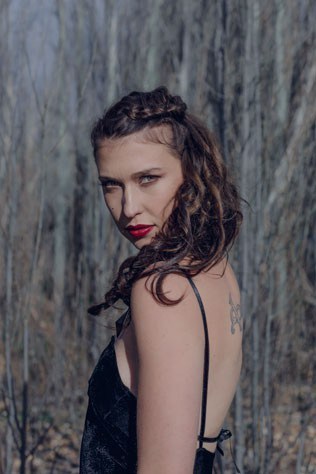
Lanie Lane




